Humble Monthly Bundle: January 2021/2016
How do you get into video games if you didn't really grow up with them? I've tried attacking this problem from a number of different angles. One of my strategies is the Retro Games project, another feature of this blog. That project is largely (but not entirely) based around franchises represented in the Super Smash Bros. series, which has become kind of a catch-all for a big section of video gaming.
But I want to rewind to the early 2010s for a minute. In 2012, a friend told me about a bundle of games, some of which I'd heard were modern classics, being sold for very cheap. All of them could run on my underpowered laptop. That bundle was Humble Indie Bundle V.
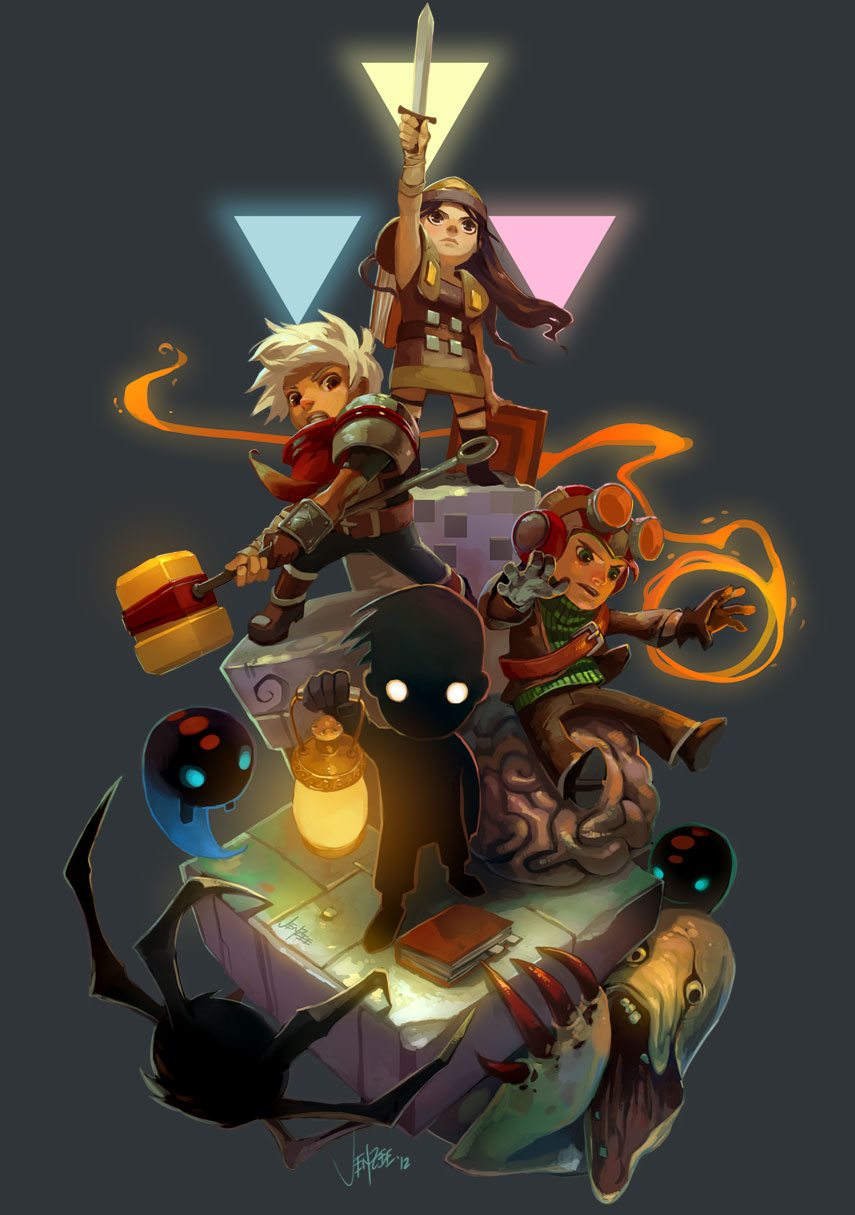
This was Humble's fifth major project (but 13th overall) bringing together a group of games under a low price to raise money for charity. Pretty much every game in this bundle is fantastic: Psychonauts, Bastion, Amnesia, Limbo, Braid, Superbrothers... it's a gold mine.
Indie Bundle V was also a good representation of the indie game development boom that began around that time. Thanks to the Xbox 360 and the Steam game store on PC, indie developers had new places to showcase their work. Humble and the indie boom kind of walked hand-in-hand for the next decade; Humble kept bringing together bundles of notable indies, along with the occasional blockbuster title.
Towards the end of 2015, Humble started another project: a subscription service that provided a grab bag of games every month. It's legitimately a great way to try out some underappreciated games. But here's the thing: I've been subscribed to Humble Monthly for years, but I've been really bad about actually playing the games. I figured it was time for that to change.
More recently, the Humble Monthly Bundle has required subscribers to choose which games from the bundle to play, rather than giving subscribers all the games. It'd be helpful if there was somebody talking about which games are actually worth playing, wouldn't it?
SO. This, the latest project of Project-Topia, has two goals every month.
1) Firstly and most importantly, this overview will rank and review every game in the most recent Humble Monthly Bundle every month. Hopefully this will give subscribers and non-subscribers alike a sense of what all these games are, and whether they're worth picking up.
2) Secondly, I'm going to be reviewing one retro Humble Bundle every month. For now, that's going to be whatever monthly bundle happened five years ago this month. So this month, I'll be reviewing the January 2021 and January 2016 bundles.
Everybody following that? Okay, cool. Let's get into it
HUMBLE JANUARY 2021 BUNDLE
1) PC Building Simulator
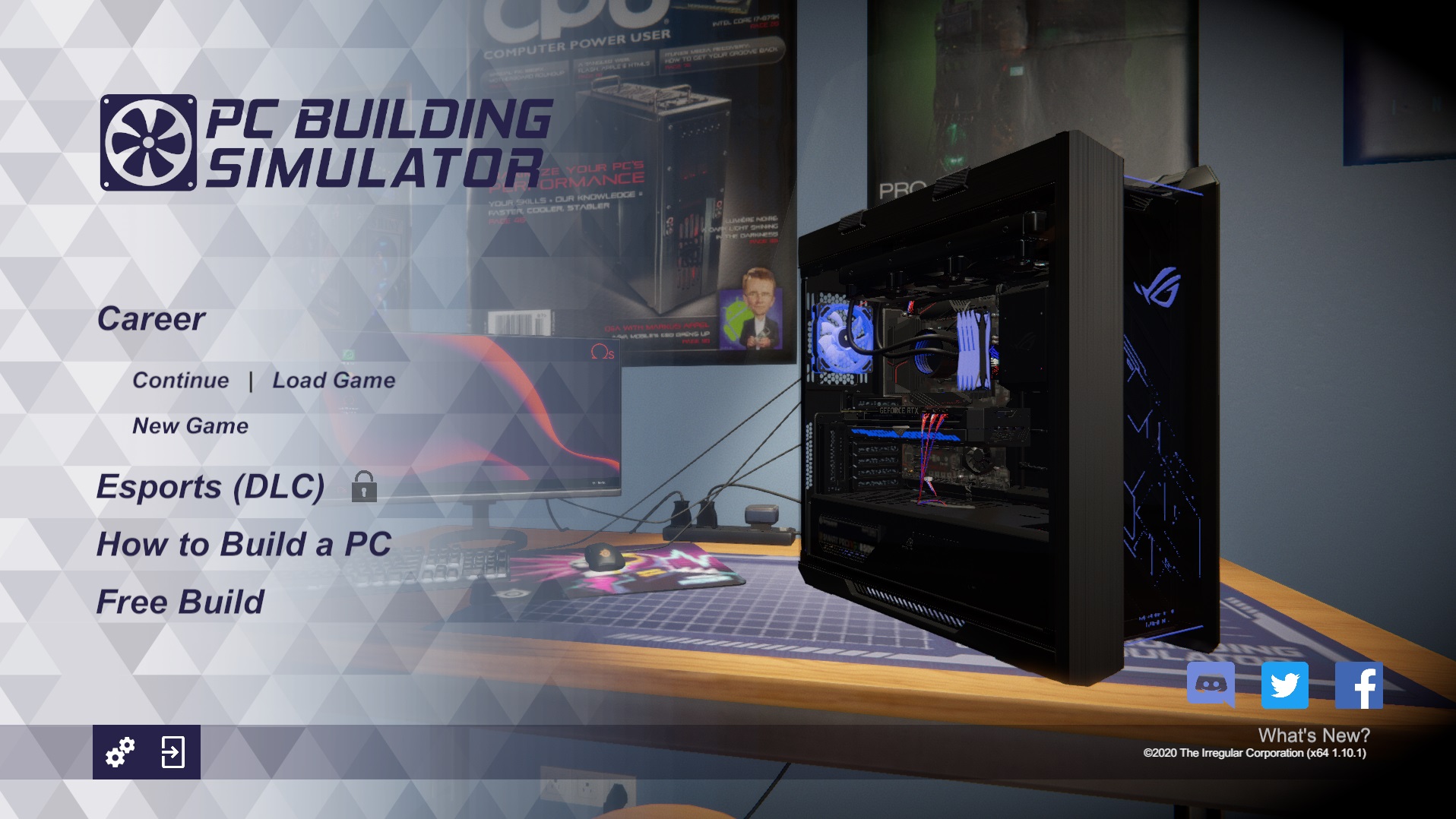
PC Building Simulator has shown up in my Steam recommendations from time to time, and every time I've thought, this is too ridiculous to exist. Surely the notion of playing a game about building gaming PCs, on a gaming PC, is too far up its own ass to be anything but pretentious and masturbatory. I figured I'd try this once, get the gist, and that'd be enough.
Out of all the games on this list, I've easily put the most time into PC Building Sim. Several evenings' worth. Cause it's not what I thought it was. I figured it'd be, like, a tool. If you wanted to build a gaming PC, then PC Building Sim could sort of point you in the right direction, or you could pretend to have a nicer PC by playing the game. But it's not that.

In PC Building Simulator, you're running your uncle's PC repair shop. People email you with requests, and then send you their desktop PCs to fix, clean, and upgrade. Eventually, people start asking you to build PCs for them, but not until you put a fair bit of time into the game. Every in-game day you come into work, check your email for new jobs, order new parts for the jobs, and then get to work fixing the PCs that have come in.
Some of the game is automated; you're not required to know exactly which cable should go where. On the other hand, the game won't let you give the fixed PC back until you've put all the parts in, either, so there's a little bit to learn. You also have to figure out when parts will be compatible with each other.
It's very easy to get into a routine with this game. It's quite soothing. The in-game radio selection is great, too. I was reminded of Euro Truck Simulator 2. That game does have trucks in it, yes, but it's a compelling long-term experience because you're expected to grow your business with the jobs that you take. Same goes for PC Building Sim: if you only do an okay job, you'll just get PCs that need to be dusted out and de-virused, and it gets boring fast. But if you give your customers amazing service, your rating will go up and you'll start getting new things to do.
It did not escape me that it was a little weird coming off work in the evenings and booting up PC Building Sim, which is basically another work simulator. But I found this really cozy and endearing. A meditative atmosphere and a good soundtrack do a lot to endear me to a game.
2) Not Tonight
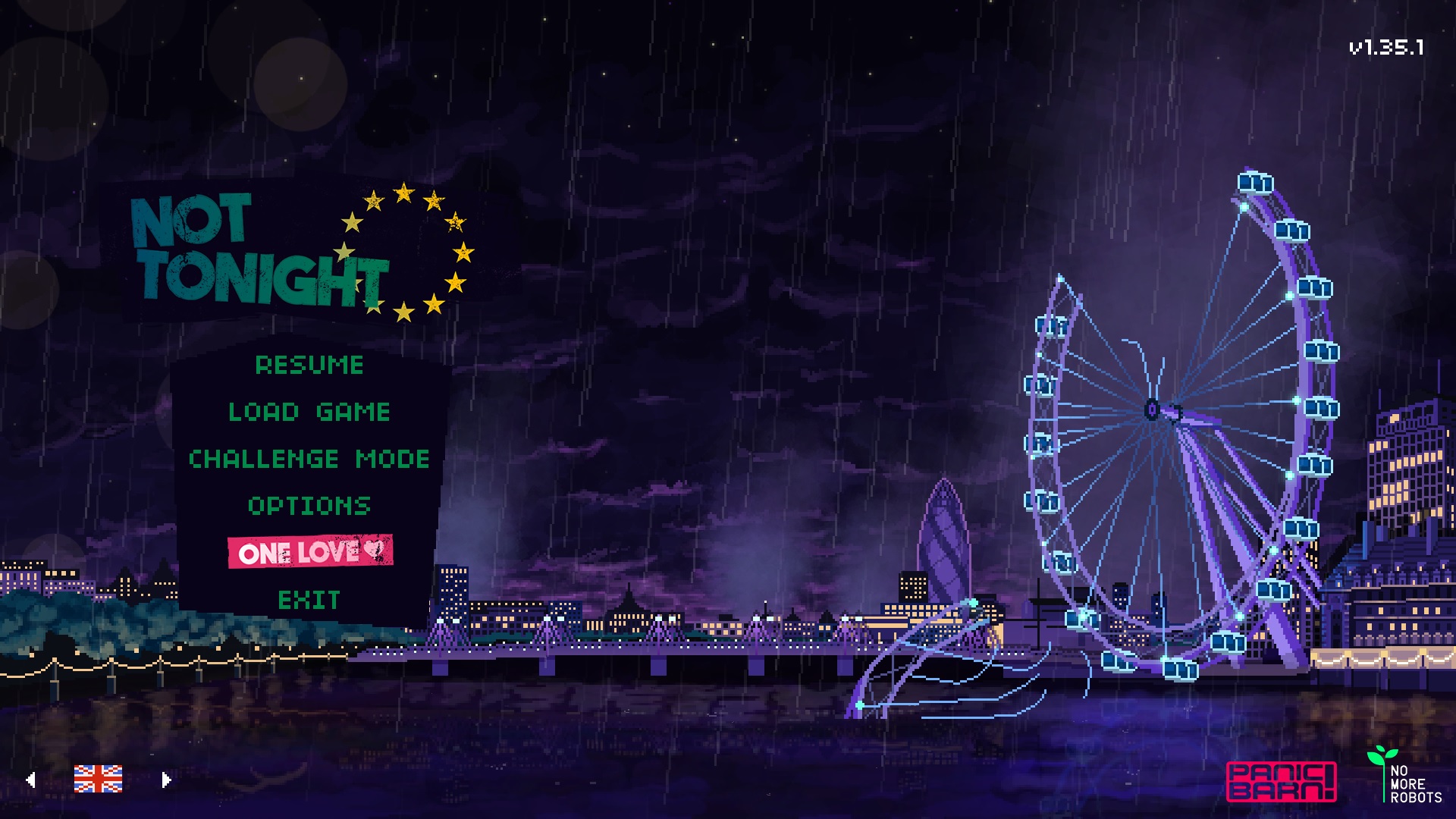
I don't know what it says about me, or maybe about the bundle in general, that my top two games of this group are job simulators. But yeah, here it is: what if Papers Please was set in Brexit.
Papers Please was a 2013 game in which you played a border crossing guard in the fictional fascist country Arstotzka. The player checks immigrants' IDs and paperwork before deciding whether or not to allow them entry. It was a legitimately fantastic and emotional game with a great core gameplay loop.
Not Tonight doesn't need to make up a fictional country to depict fascism. That's how far we've come in the last eight years, I guess. You play a person who lives in England but is threatened with deportation unless they show that they can make a living wage. You take jobs as a bouncer at various pubs and clubs, checking people's IDs and tickets to make sure they're allowed entry.

The main gameplay of Not Tonight is verrrry similar to Papers Please. I think Papers Please was perhaps a bit more polished. This game asks you to switch between different gigs, and each gig has different requirements. You also get to spend time at home each day. Papers Please omitted those two things, and instead focused on a really polished and slowly escalating gameplay loop.
But it's not a bad thing to be a little rougher around the edges. The story of the game is sort of sad and pretty relatable, and I dig it. The pixel art is GORGEOUS. (Gorgeous art is sort of a theme in this bundle.) The music, overheard from each club you stand outside, is wonderful. Not Tonight is a bit more about your story than Papers Please, which was more about the stories of the people around you. I like both approaches for different reasons, and I really liked this game.
3) Vampire The Masquerade: Shadows of New York
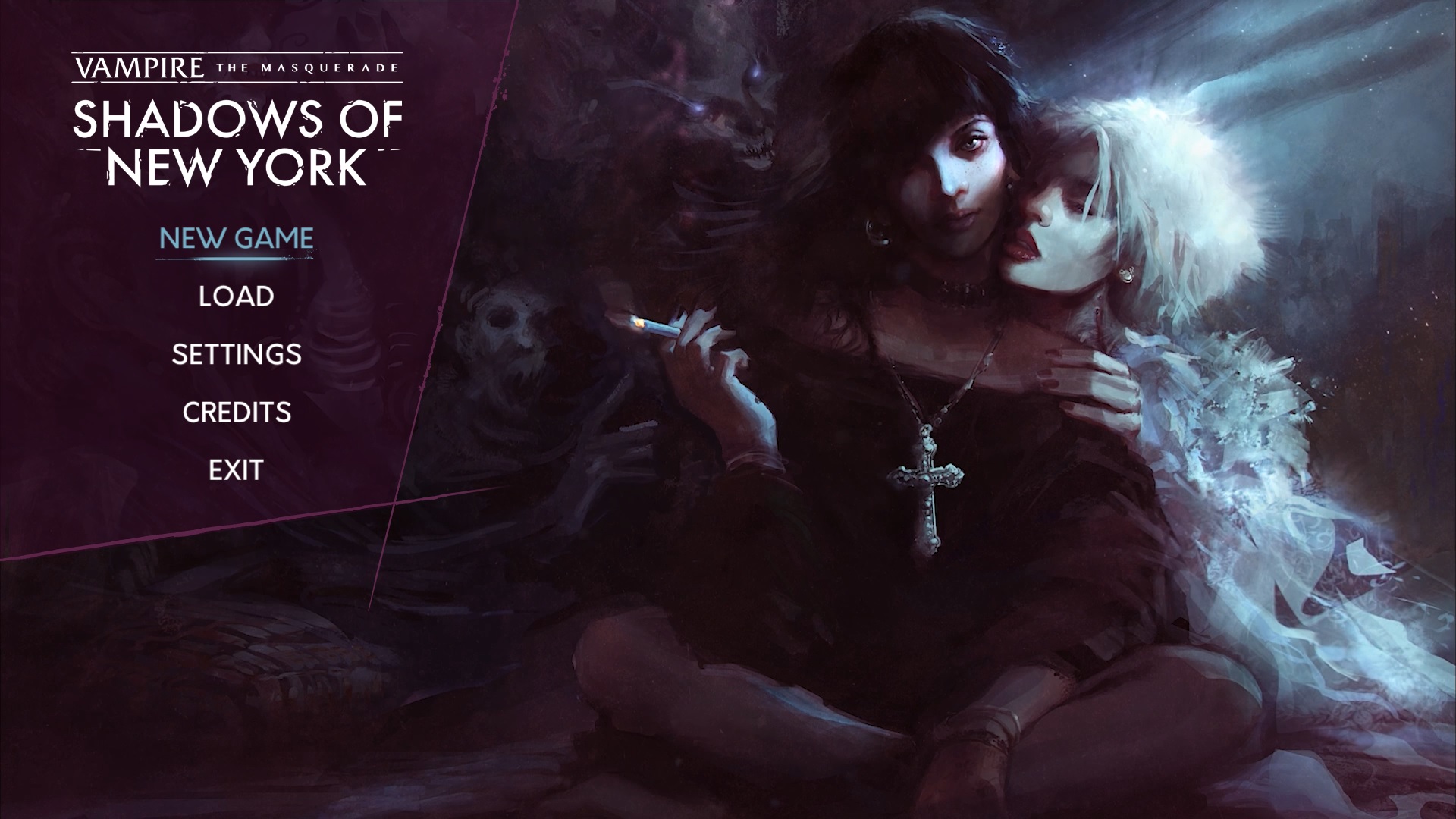
VTM: Shadows of New York is a well-written and beautifully-drawn visual novel, and that's all it needed to be.
Vampire: The Masquerade is a tabletop roleplaying game, one of the most famous in the genre along with Dungeons & Dragons and Warhammer. But whereas D&D and Warhammer are highly focused on combat, Vampire: The Masquerade takes a slower approach, and puts more emphasis on the stories you can tell within the setting.
As the title implies, you play a vampire, trying to get by while keeping your existence secret from humans ("the masquerade"). I have some prior experience with the setting, and I've found it to be generally more queer-friendly than other mainstream tabletop settings, too.

So all this game had to do to succeed was tell a good story. And it does that. Shadows of New York follows Julia, a down-on-her-luck young journalist whose life is upended when she's chosen by her local vampire clan. The way that the game parallels the horrors of being a vampire with the horrors of existence in general is very on-the-nose.
There's not really any choices to make in the gameplay. Occasionally you get to choose Julia's response to other characters, but it doesn't seem to affect much. There's two endings to find, but that doesn't come up until right at the end. Shadows of New York sacrifices personal choice to tell a compelling and self-contained narrative, and I have zero problems with this. I can't get enough of this game's atmosphere and characters.
4) Heeey! Park-Boy
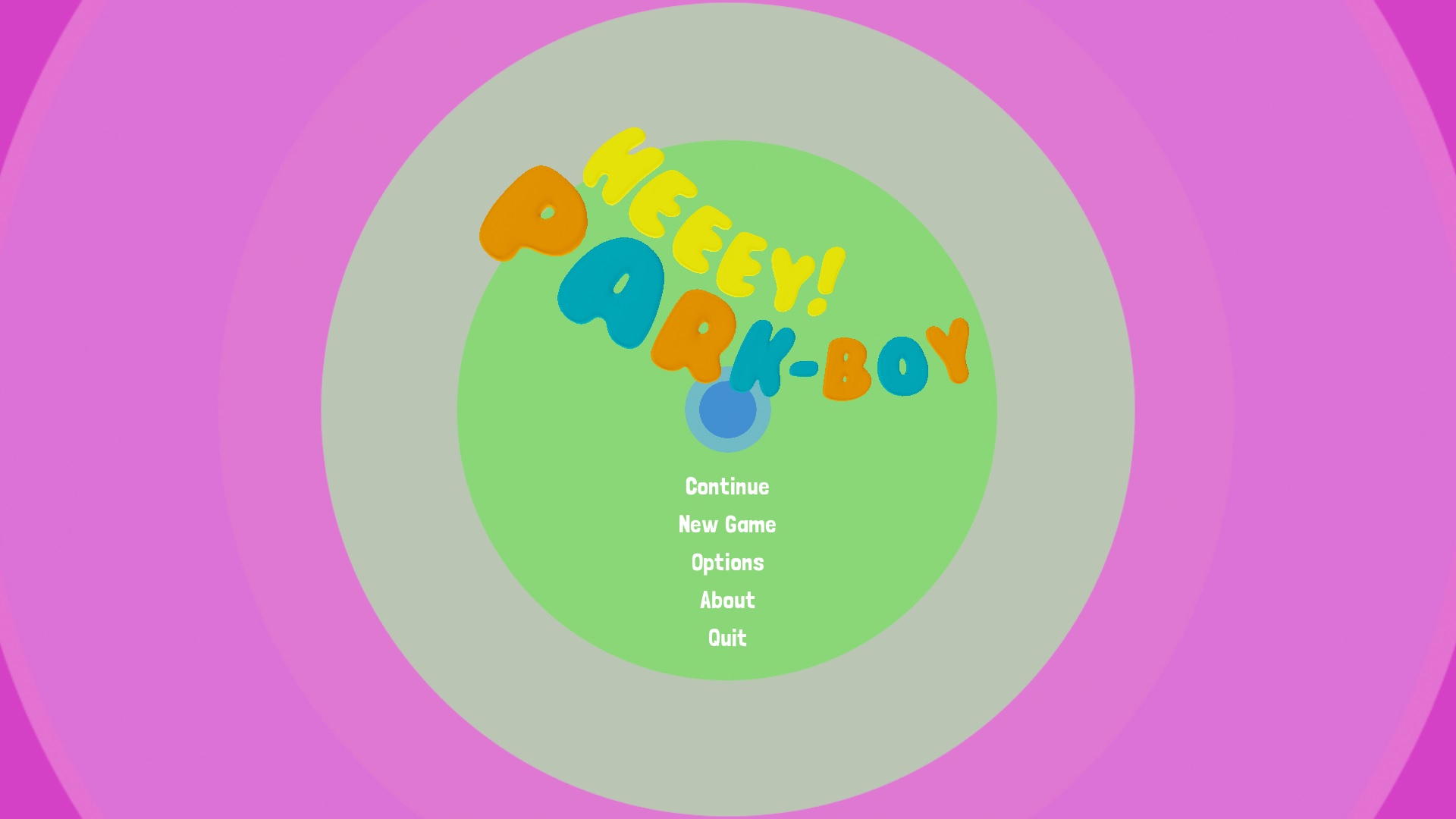
Every month, Humble releases an original game within its Humble Monthly. Some of these later get wider releases and become major successes, such as A Short Hike, Uurnog, Wilmot's Warehouse, and Getting Over It with Bennett Foddy. For a Humble Original to rank this high among a group of over a dozen games is a pretty big deal.
But yeah, here's Heeey! Park-Boy, this month's Humble Original, just below the vampire game and the job sims as my fourth favorite game of the month. The designer, Trey Brown, has said that they wanted to evoke the spirit of weird PS2 games with this game, specifically Katamari Damacy. Well, it worked; this game absolutely charmed my socks off.
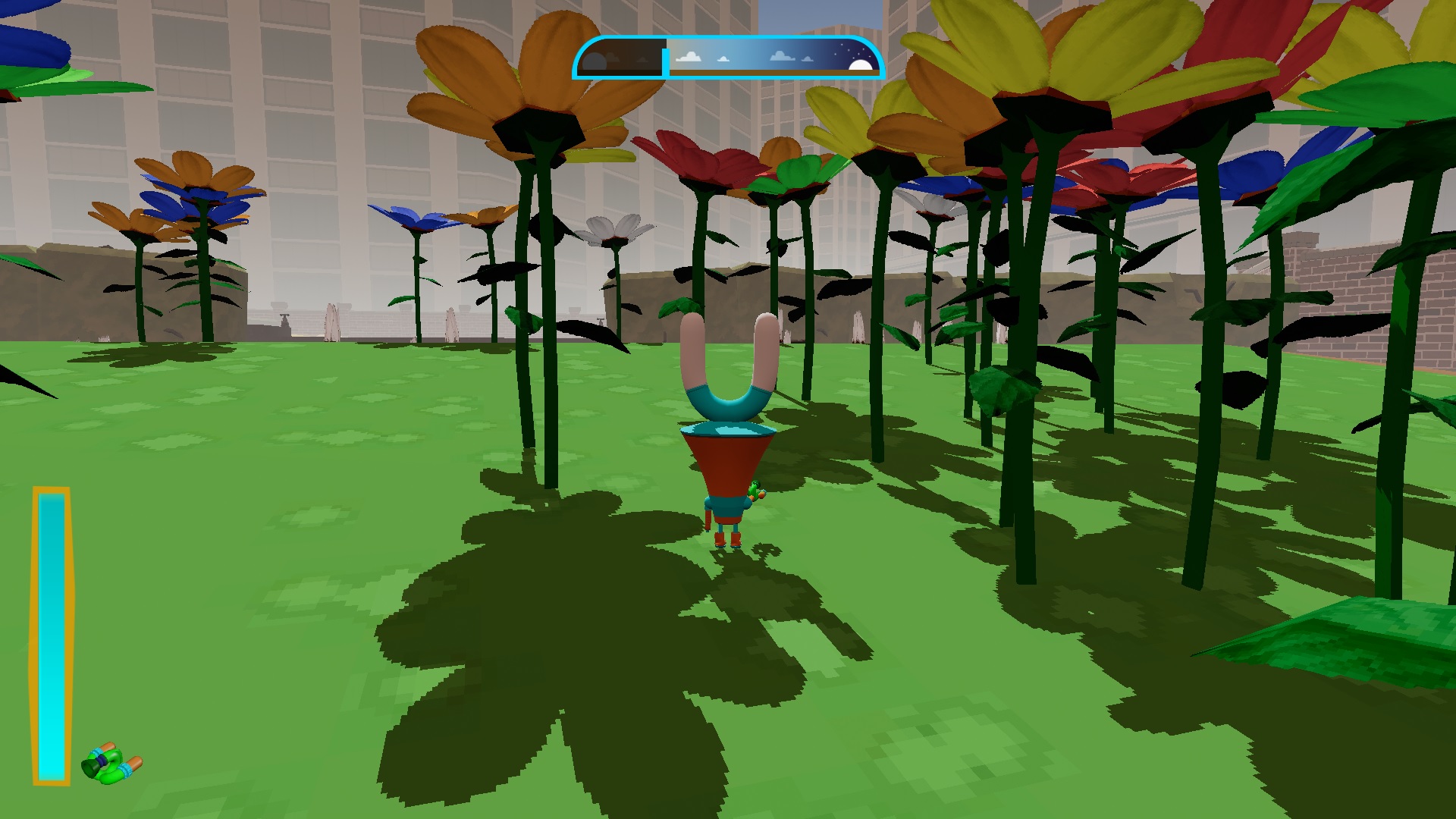
You play as a miniscule alien who lands on Earth, in a barren patch of ground. There's a couple of flower buds, so you water them and play music for them. When they bloom, they spit out some more flower buds. Then you water those, slowly growing yourself a little garden park. That's the game.
It's legitimately fantastic. It's sweet, it's endearing, the music is great, the visuals are pretty whimsical. It's got a bit of a Pikmin vibe to it, albeit a bit jankier. It shows that if you've got a sweet idea and design the game around that, you're gonna hook me pretty good.
5) The Ambassador: Fractured Timelines

Again, this isn't the sort of game I expected to rank very high. In my experience, a low-res game with really simple gameplay, and without any big names behind it, doesn't tend to hold the attention for very long.
Well, I say without a big name: that's not entirely true. The Ambassador: Fractured Timelines (really? that's the best name they could come up with?) is published by Quantum Astrophysicists Guild. QAG also published Deleveled, which is a little further down on this list, as well as some recent minor indie hits like The Bridge and Tumblestone. But the developer is a very small team making what looks like baby's first action game.
But... this really really works. The art's pretty basic, but the game is devilishly addictive. When I booted it back up to get some screen grabs, I was playing for several minutes before I realized that I hadn't even gotten any screen captures yet.
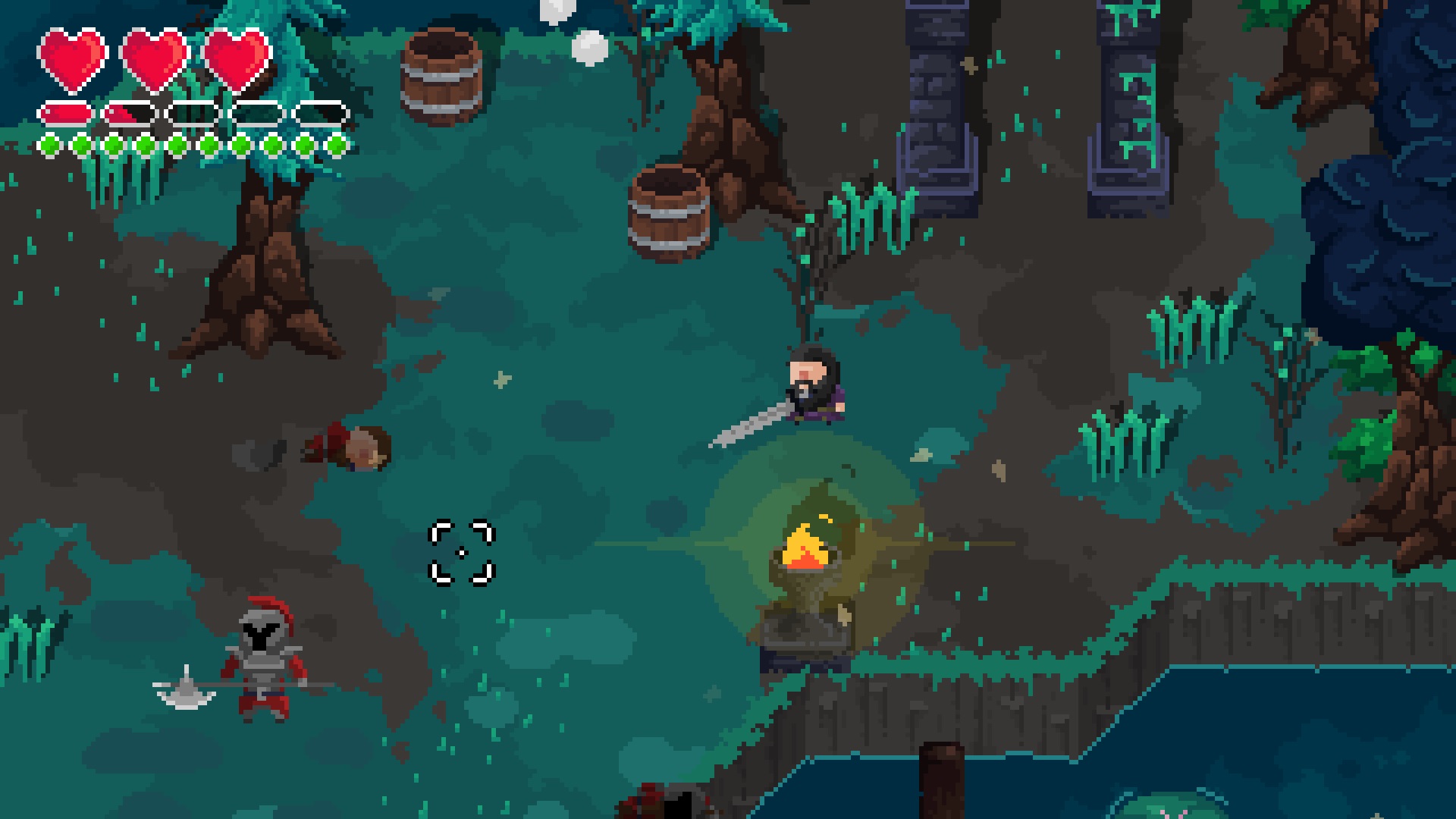
You play as a knight, training in the arts of melee and magical combat, when a disaster upends the nearby town. You then set off on one of three paths to fight your way to some key destinations and figure out what the hell happened. Along the way, you fight legions of warriors, but whenever you die, you just start the level over again immediately.
The game has the same sort of fast-paced strategic action that I remember from Hotline Miami, but in tone it reminds me a bit more of Celeste, for some reason. Despite all the death, it's not that brutal. You get into sort of a rhythm in each level, trying to figure out the right way to go and testing your reflexes, experimenting with all your weapons.
There's some games further down this list that have some real money behind them, recognizable name brands and developers. But this little game really worked for me. I'm ranking this list based on how much I wanted to keep playing each game, and The Ambassador keeps drawing me back.
6) Minoria
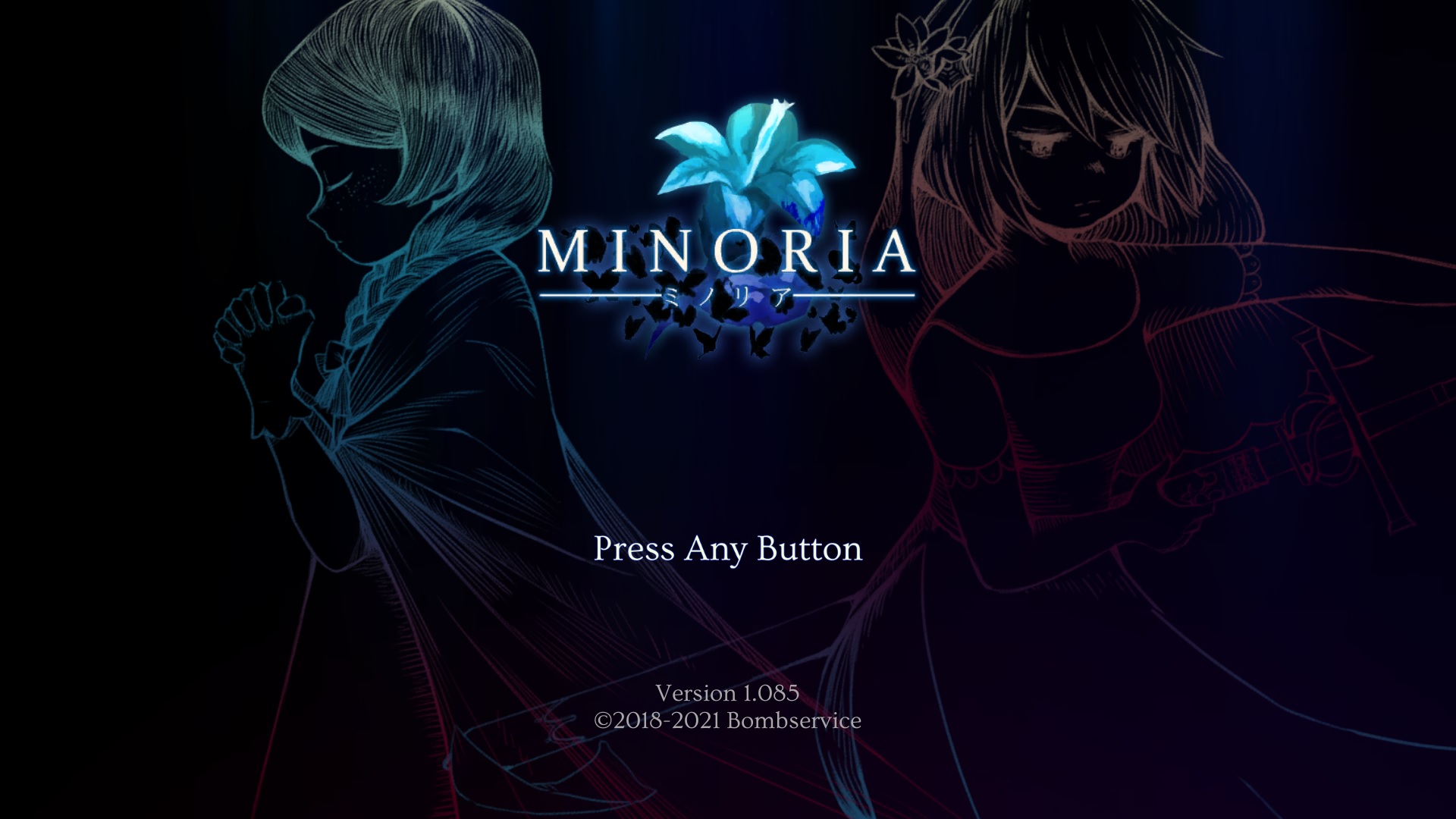
Now comes the point in the post where I admit my lack of gamer cred and say that I've never actually finished a Metroidvania. I've dabbled in a few; the closest I got to finishing one was Metroid: Zero Mission, which I played on an old GBA a couple years back. But I'm not really used to playing this genre, so it's sort of hard for me to tell how good this one is.
Well, I can evaluate Minoria from more of a novice's perspective, I suppose. Minoria is a 2D sidescrolling Metroidvania with a lot of elements taken from Dark Souls, such as the punishingly hard combat and the bleak red "You Died" game over screen. It's meant as a... follow-up? sequel? spiritual successor? to the Momodora series, which has run for four games now.
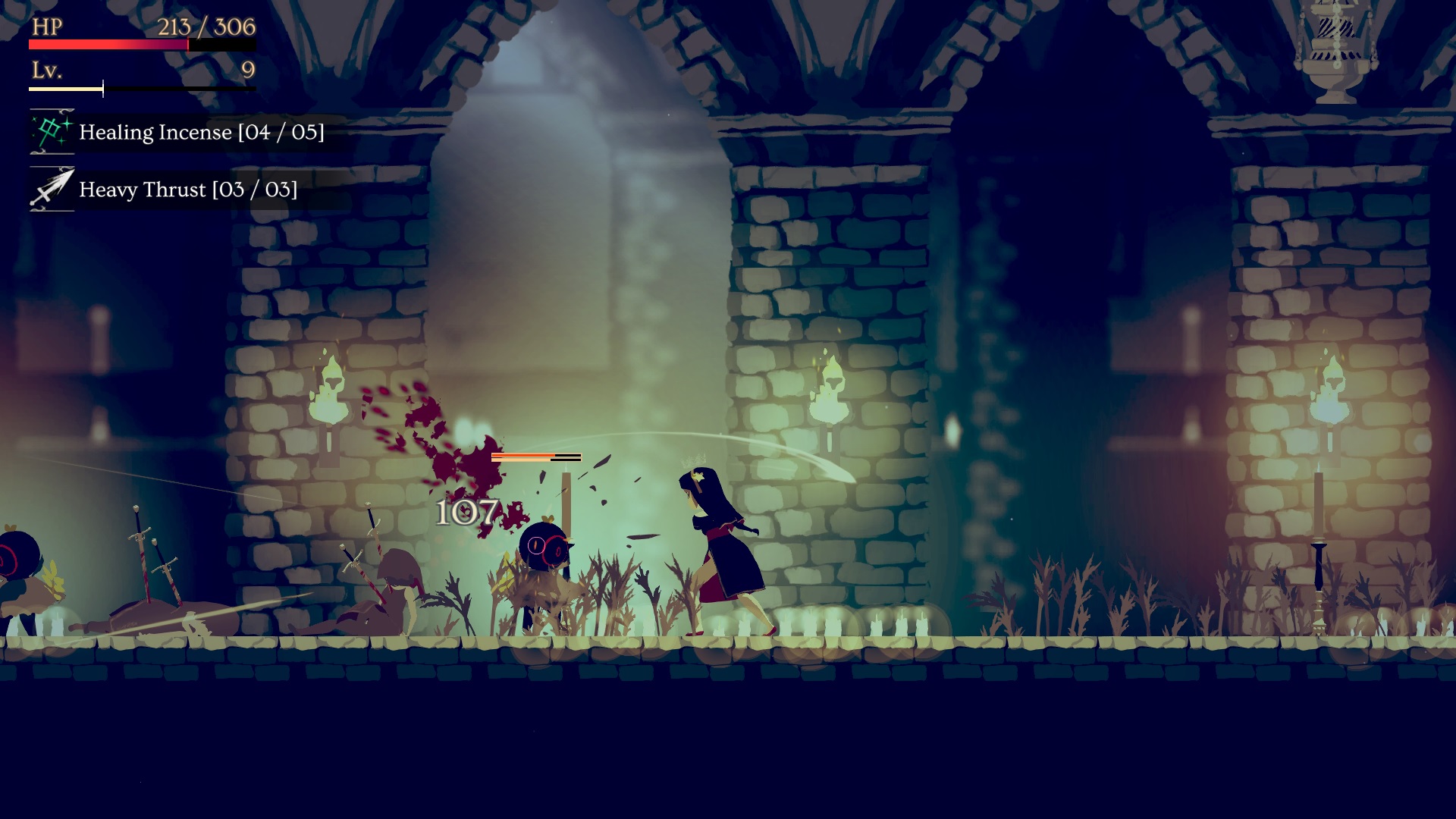
You play as a warrior nun. Your kingdom has been overrun by evil witches, and it's your job to rescue the princess from the evil forces that have infiltrated the cathedral. Already the game's lost me a little with its premise. If we're doing nuns vs witches, I'm not gonna be inclined to side with the nuns.
From here, it's standard action platformer stuff. You explore the cathedral for new places to go, fight mooks, discover bosses, and die a lot. That's pretty much the whole game. I'm not quite as compelled to play more of this game as some of the others on this list. I think the art style is somewhere between nice-looking and a little rough, depending on the context. The sound design also sort of varies. It doesn't feel like the game gives you very many toys to play with, at least not at first.
But, well, it's an exploration game. And there's something pretty addictive to the idea of exploring a space and getting to know it. Color me intrigued enough to mess with this game a little more, but not enough to see it to the ending.
7) Deleveled

Deleveled is a palindromic puzzle-platformer. I mean that in more ways than just the title. You play as a pair of blue dots navigating a series of levels made from simple geometric shapes. If you can turn on all the switches in the level, you get to move on.
The levels require that you jump up and down at various heights. But the game doesn't give you a jump button. You get one button to move both dots left, and one to move both dots right. And that's it. If a dot falls onto the other one, it bounces up at exactly the same height. Hence the palindrome, and the puzzle: you have to manipulate the mirrored dots in order to get them to unmirrored positions in the level.
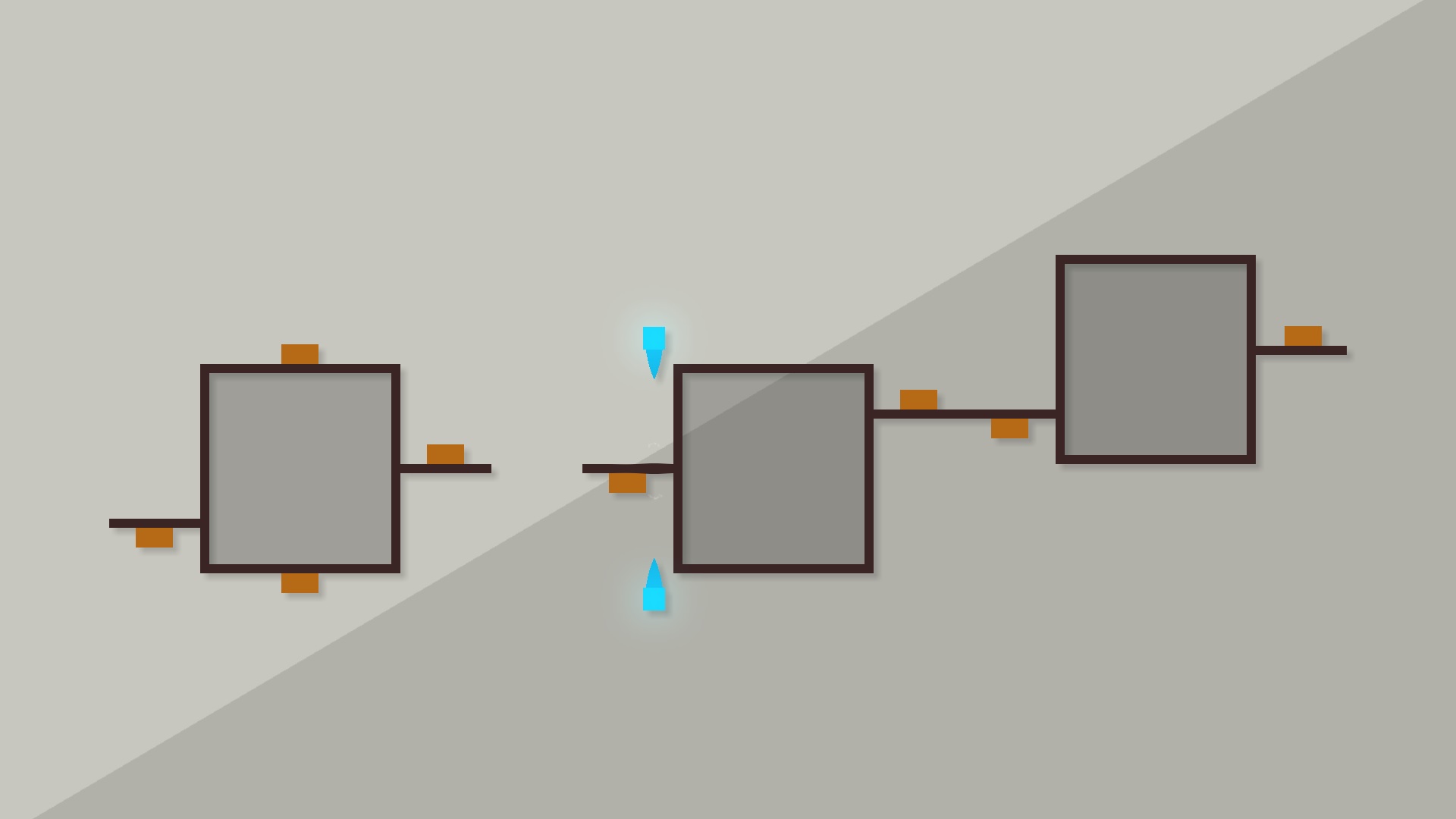
I do like puzzle games; I've put hours into some of them (including one that's located later on in this post). This is a pretty good puzzle game, but it's quite difficult. I can only play a little bit at a time before my brain starts hurting and I have to do something else.
8) Pathologic 2

This game is creepy as all hell.
First, there's a theater. A play went wrong, you're told. You're told to go to a nearby cathedral to ask for another chance. You set out. On the way, you find a village in chaos. People are dying in the streets. At the cathedral, a jury of three. You beg them to try again.
Soon, you're on a train. Occasionally you have some very creepy dreams, which also serve as a tutorial. Eventually, you arrive in a town - and you're immediately wanted for murder.
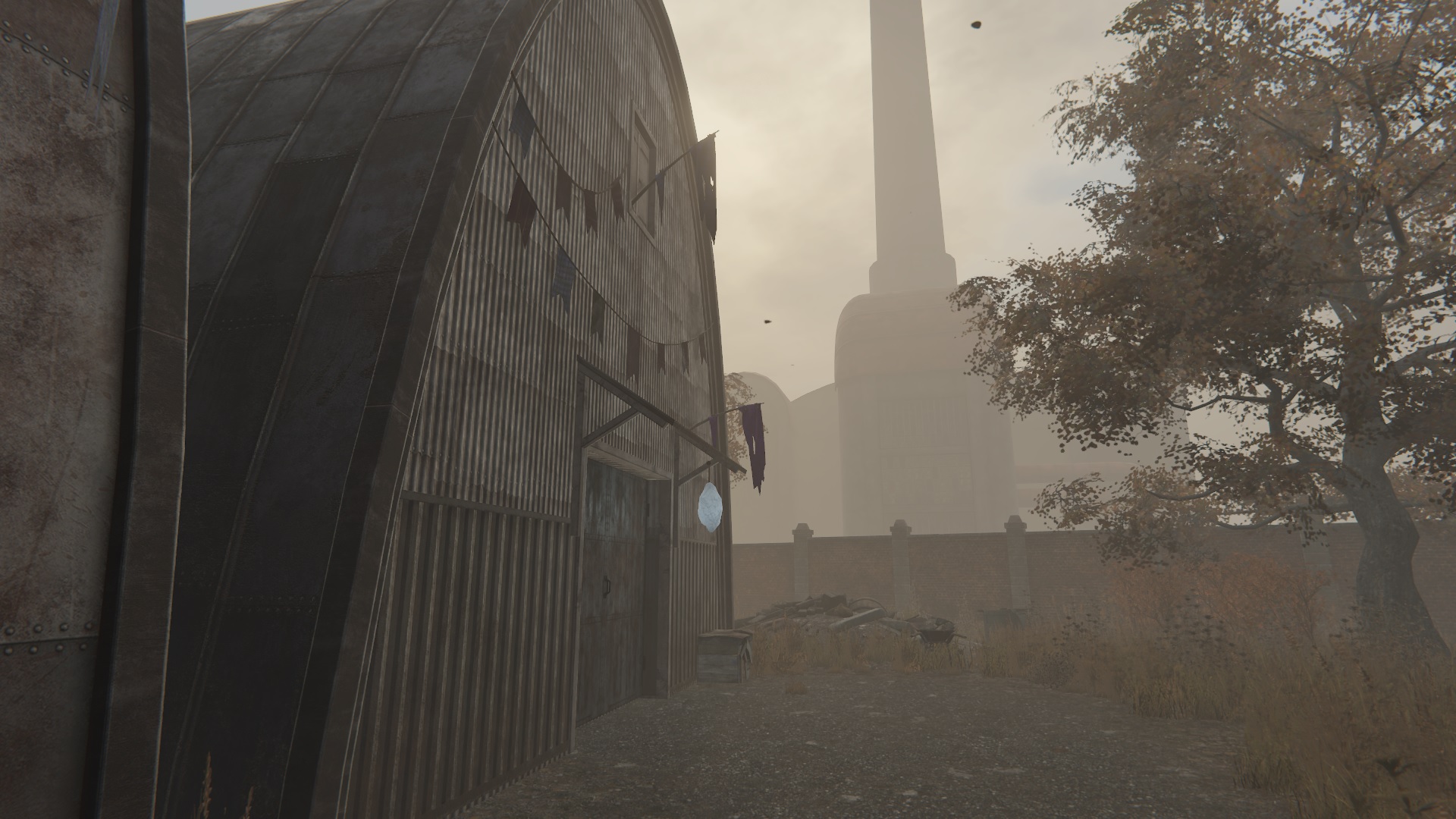
Pathologic 2 is a first-person adventure game, a sequel/remake of the 2005 game Pathologic. As you might guess from the title, it has something to do with disease. It sort of does... eventually. Later in the game, you do have to deal with an outbreak in the town.
But it's not really about that. Textually, Pathologic 2 is about surviving in a village where you could die at any moment, from hunger, thirst, disease, or your murderous fellow villagers. I have never looked over my shoulder more often in a horror game before. You take sidequests, you seek out the nourishment and supplies you need to survive, and you try to do it all on a ticking time clock. This game is STRESSFUL.
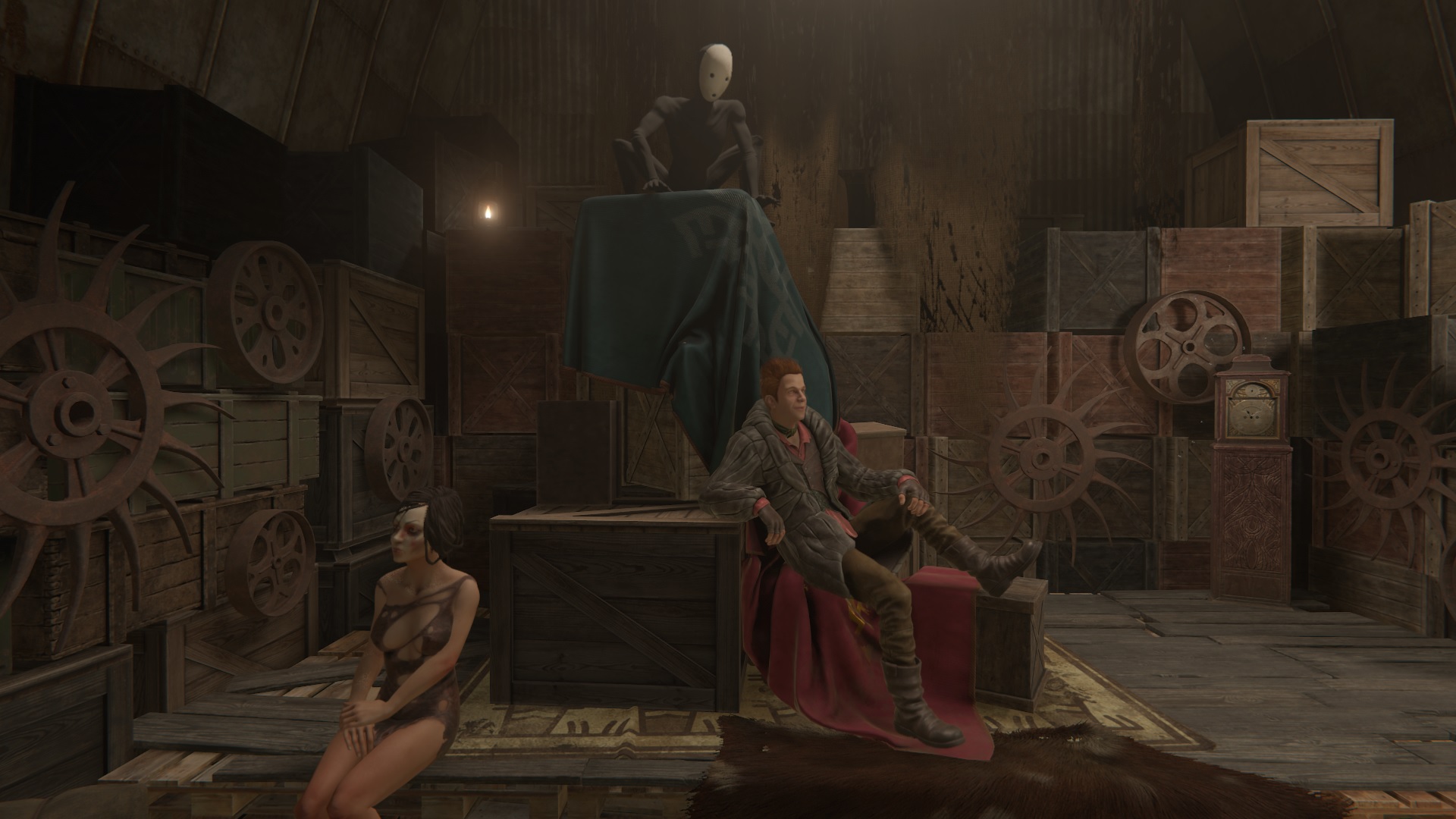
But to step back for a second, Pathologic 2 has slightly bigger ambitions than that. Remember the play gone wrong? There's an implication that this village IS the play. Featureless figures with creepy masks keep popping up. Dialogue scenes are very lyrically written, for how simple their content is.
I can't escape the sense that this game is inspired by Bertolt Brecht, a playwright form the early 1900s who used absurdism and self-reference as a means of alienating his audience from the material. Brecht wanted his audience to be very aware at all times that they were watching a play, partly as a way to counteract the escapism-heavy Nazi propaganda common in his home country.

More than other games, Pathologic 2 calls attention to its own construction. It clashes the abstract with the intensely real, the poetic with the mundane. You're always questioning the motives of every character in the game, the player character, the game's developers, and even yourself for playing it. Never have I both started and stopped playing a game with the same question in my head: "What IS this?"
Pathologic 2 is critically acclaimed. I'm impressed by it, even creeped out by it. It intrigues me. But I can't say I really ENJOY this game. Then again, maybe that wasn't the point of it.
9) Warhammer: Chaosbane
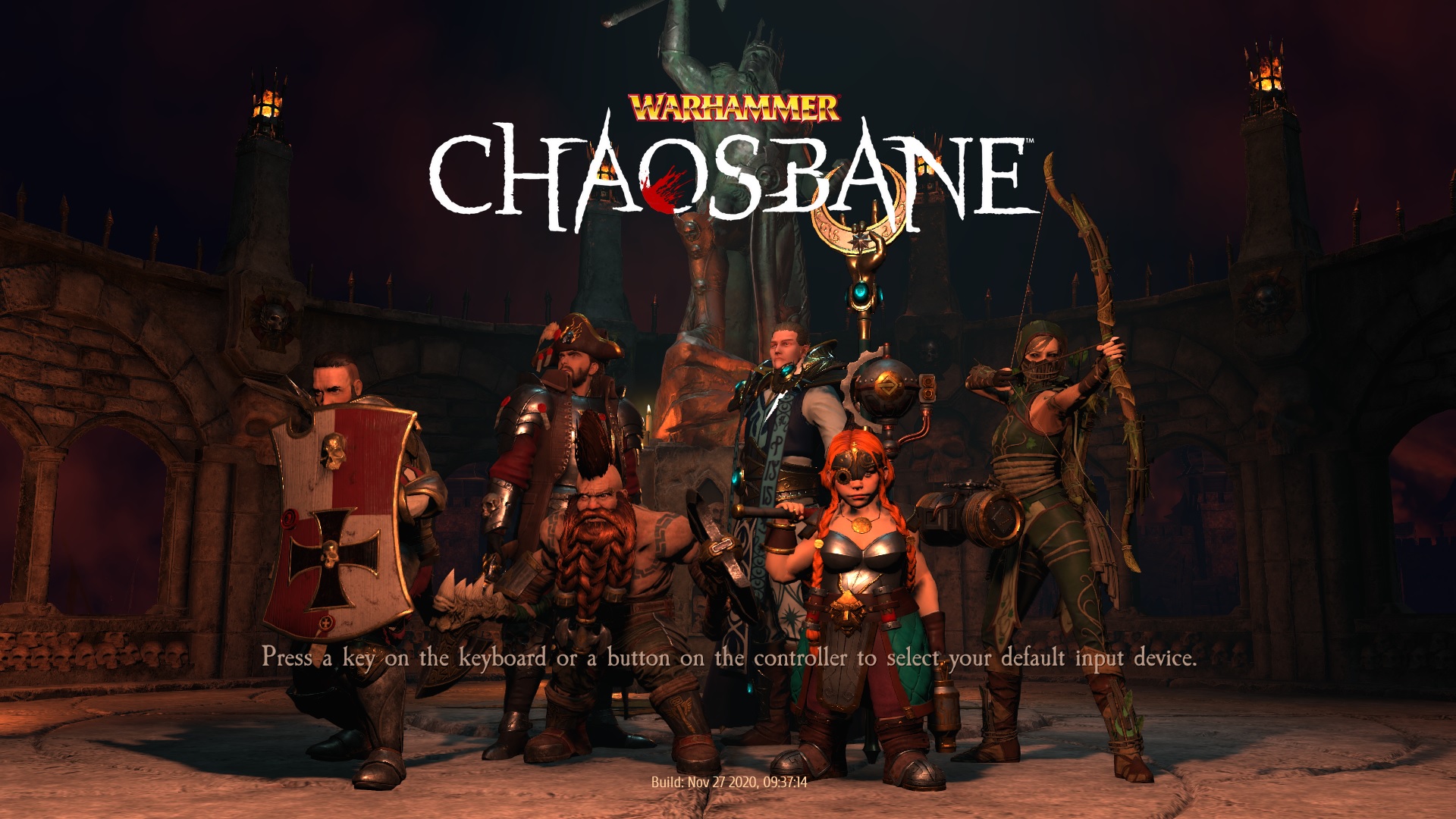
My clicking finger hurts.
If you're not familiar with Diablo, it's a top-down action-based dungeon crawler in which you fight your way thru dungeons full of baddies as one of several fantasy character archetypes. (Wizard, elf, dwarf, etc.) Diablo is often called a loot-em-up because the game generates random loot as your rewards in every dungeon. It's an enormously popular series that's been running since the 1990s, so of course people keep trying to copy it.
I'm gonna give you a spoiler right now for the rest of this Humble Monthly project: Humble keeps giving me Warhammer games. I have over half a dozen Warhammer games in my Steam library now, and I don't even play Warhammer! With that volume of games, it was probably inevitable that they'd try out the Diablo formula for one of them.
Surely, by the end of this, I will understand what the hell Warhammer actually is. Warhammer 40K is the slightly more popular version, and that one I'm a LITTLE bit familiar with - it's like, far future war tech stuff, I think. This is really one of my first experiences with vanilla Warhammer. And I'm pretty underwhelmed! It's a pretty basic fantasy action RPG. You can play as an elf, a wizard, a dwarf... if I went from this right to playing Diablo, I'd barely be able to tell the difference.
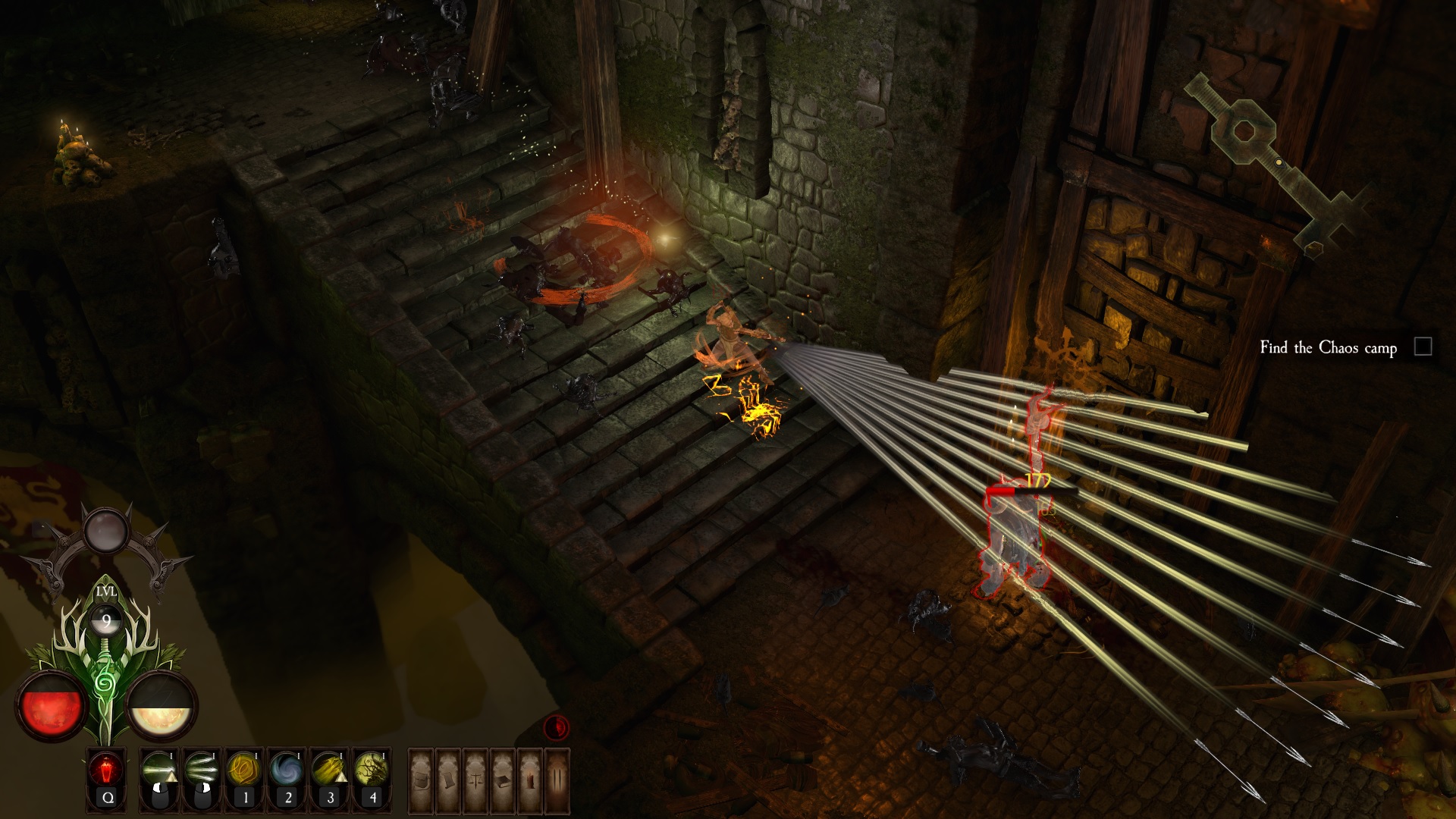
The plot is, as depicted in long pre-game cutscenes, is this: once, there was a war. (Really, Warhammer? I kind of gathered that from the title.) Then the war ended. But now, the ruler of the monarchy has been attacked! You play as one of several war veterans that's sent on a quest to defeat the forces of chaos.
I have a lot of snarky words for Warhammer: Chaosbane, because this game is not very good. But here's the thing: it does work. It's VERY pretty - somebody put a lot of money into the graphics. I guess the Warhammer brand has deep pockets. You do have to click the mouse A LOT to do everything - to move, to attack, to pick up objects - and that does start to make my hand sore after a while. Whoops, I've devolved back into snarky words.
But no, this game does function. And it's at this point in the list because I would enjoy playing it more than I'd enjoy playing the games below this point. And that's the number one criteria for what rank on the list a game receives. Other games below this may have some qualities that are objectively better than Chaosbane, but below this point, it's a struggle to want to play more of them.
10) Song of Horror
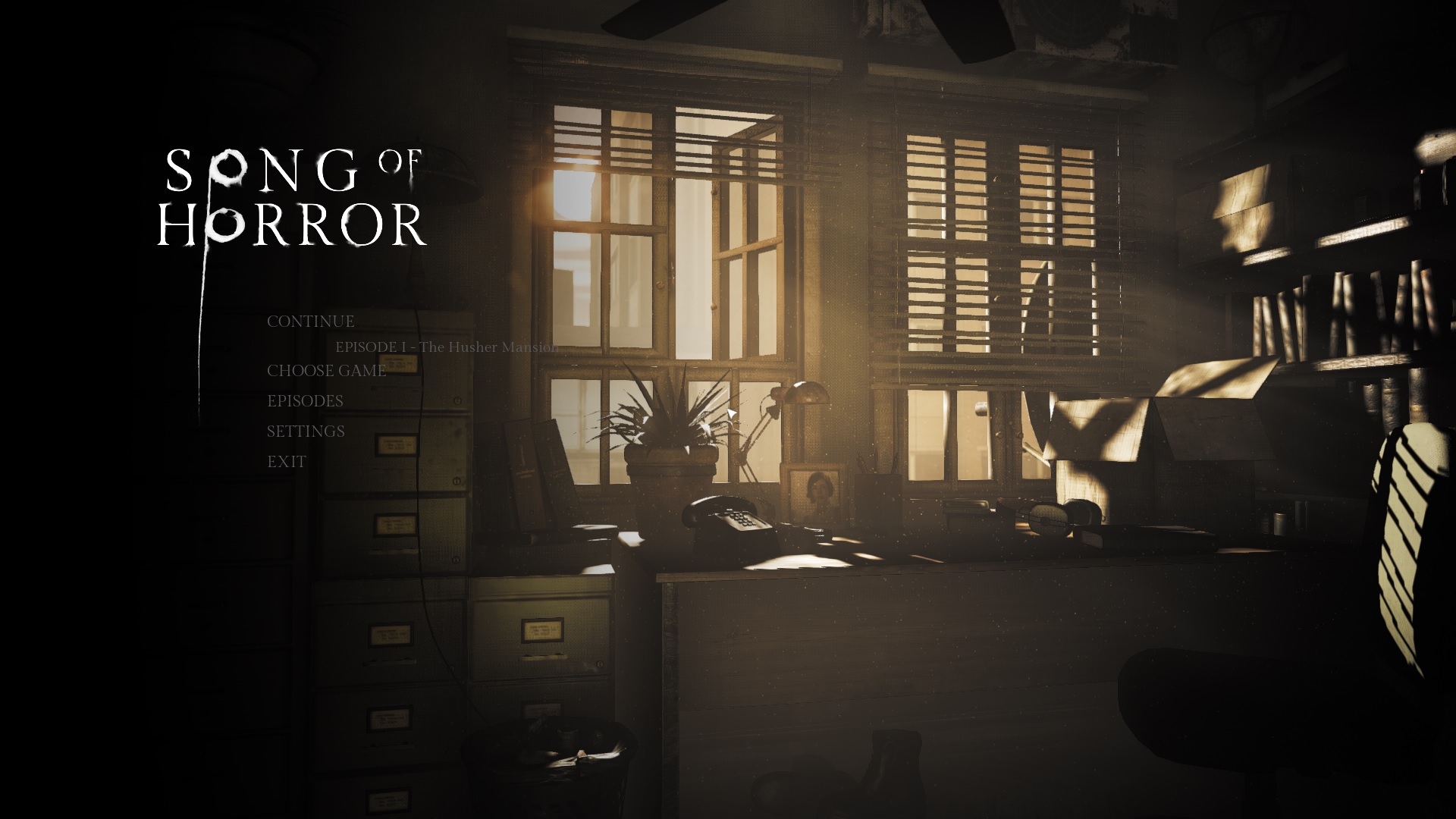
I'm gonna be 100% honest with y'all. I wrote the above section, and then I went back into Song of Horror to get some screengrabs and solidify my impressions. And I just did not want to play any more of it.
Song of Horror is a retro-style horror adventure game. You play with a fixed camera, similar to the Resident Evil and Silent Hill games from the late 90s and early 00s. The game takes place in an old mansion, and you play as one of several different characters investigating the mansion and its inhabitant's recent disappearance.
Song of Horror was funded thru Kickstarter by a small indie developer from Spain. There is clearly a lot of love for old horror games in the DNA of this game. The idea of selecting your character is interesting, as is the fact that if your character dies, it's for permanent, and you must select another character to continue. Good *ideas* here.
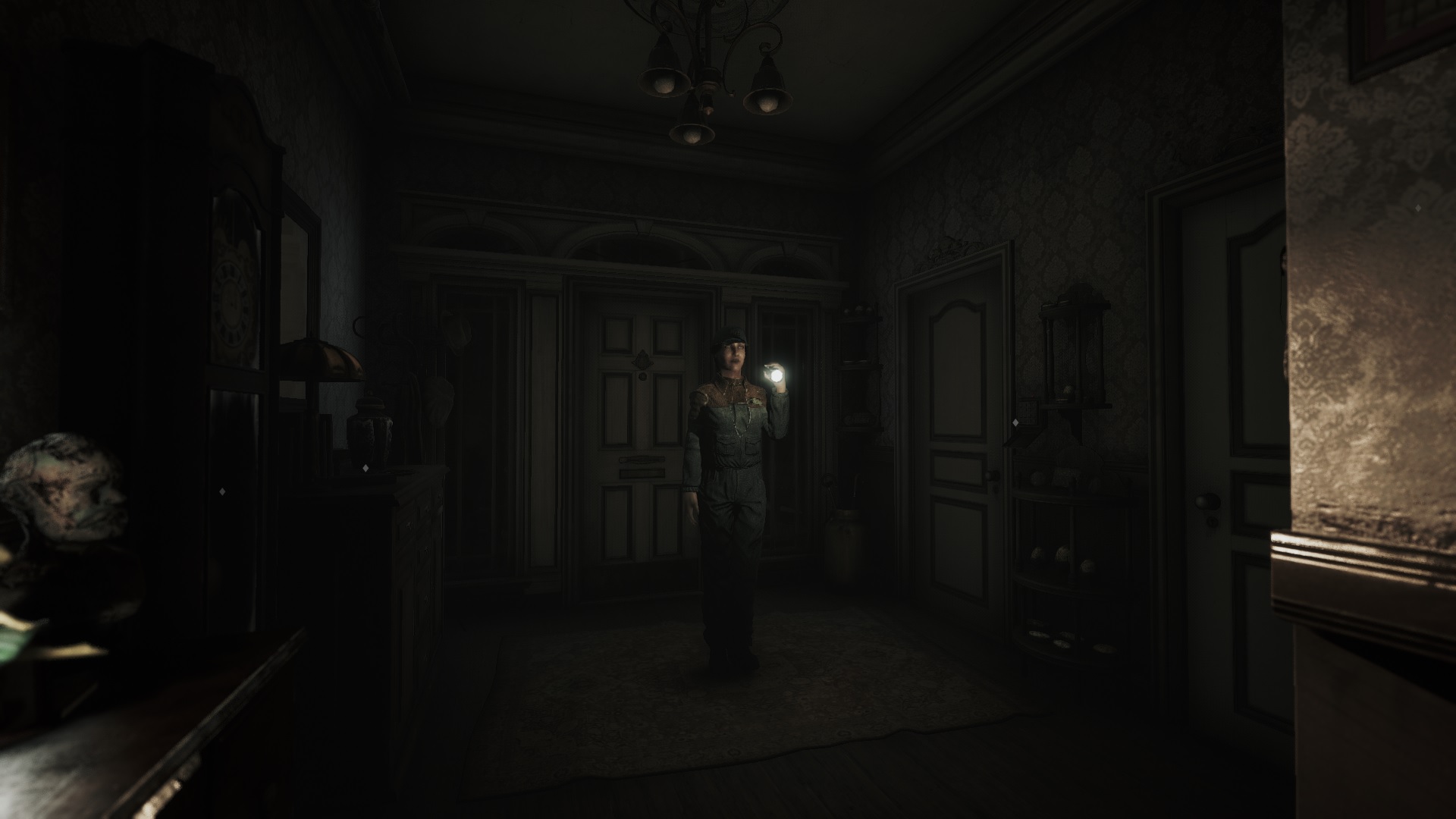
I heard an axiom once that if a game is fun to control, then it's fun to play. (Mario in Super Mario 64, and Link in Breath of the Wild, are proof of this.) Well, this game proves that the opposite of that axiom is also true. Song of Horror is SLOW to control. It's hard to figure out the puzzles in the gloom of the poorly-lit mansion. It's not a very fun area to move around in, and your character has no personality.
I placed the game this high because, well, maybe there's somebody that this game is for. If you're a HUGE fan of those old horror games, this is a throwback to them. But I didn't find much to enjoy about this. It's a nice idea that doesn't do much to draw me in.
11) Tales of the Neon Sea

Tales of the Neon Sea is functional, just barely. It's a sidescrolling adventure game where you wander around in a cyberpunk world and find items to fix other items. It just about works.
So why is this game lower than Song of Horror, a game with a couple interesting ideas that doesn't really work at all? I'll tell you: because Tales of the Neon Sea is SO BORING.
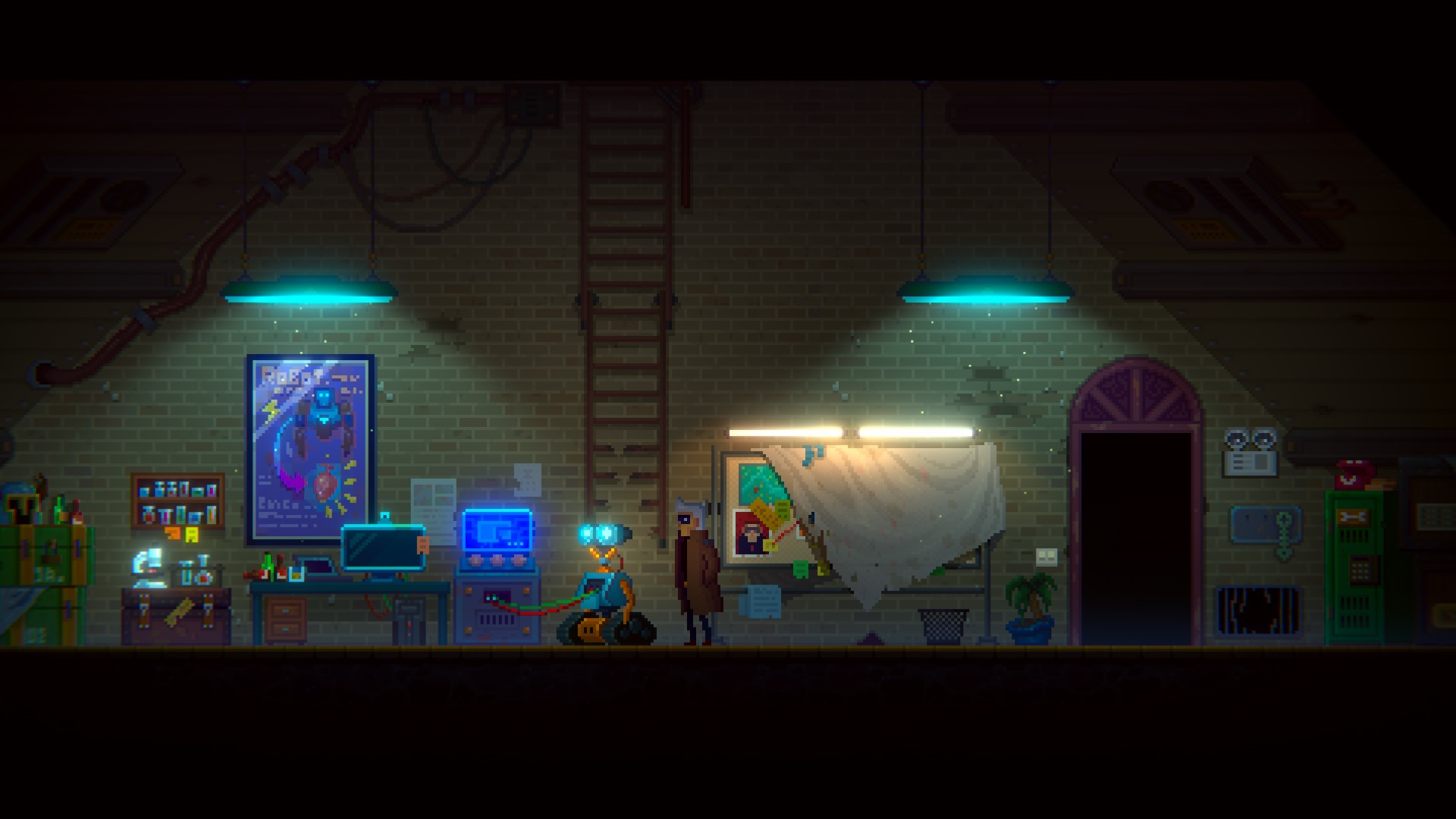
Your character, a cyborg detective, creeps along at a snail's pace. (In the prologue, you're wounded, and you move EVEN SLOWER.) All you ever seem to do is find gadgets to fix other gadgets. None of the lore is interesting. There is NOTHING to this game.
It is unnecessarily pretty. That's the best thing I can say it has going for it. The art is tremendous. The rest of the game is quite bad.
12) Ancestors: The Humankind Odyssey
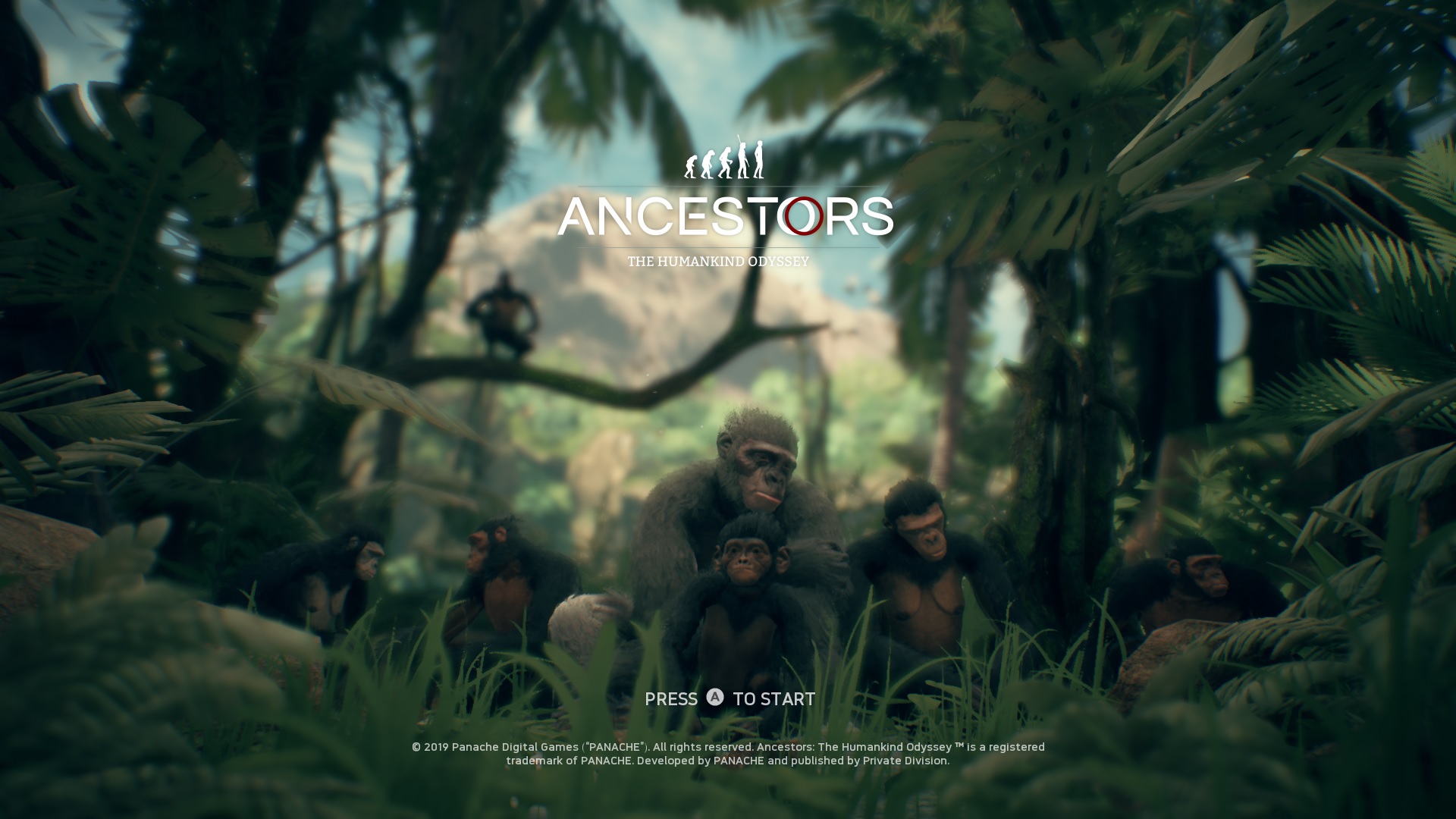
This was somebody's pet project. One person in particular, actually: Patrice Désilets, the creative director of (brace yourself) Assassin's Creed 1 and 2, Assassin's Creed Brotherhood, and Prince of Persia: The Sands of Time.
Those are some pretty great games, right? Genuine modern classics. Well, after AC Brotherhood, I guess Désilets decided it was time to found his own studio and make his own game. And so we get Ancestors: highly anticipated, and a complete garbage fire of a game.
In Ancestors (once you've survived the long unskippable opening cutscene), you play as an ape, one member of a small clan. As the title implies, you are the ancestors of humans. It's your job to learn about the world around you, what foods to eat, how to use weapons, and so on. Your behavior is reflected in your clan, so they'll learn new behaviors along with you.
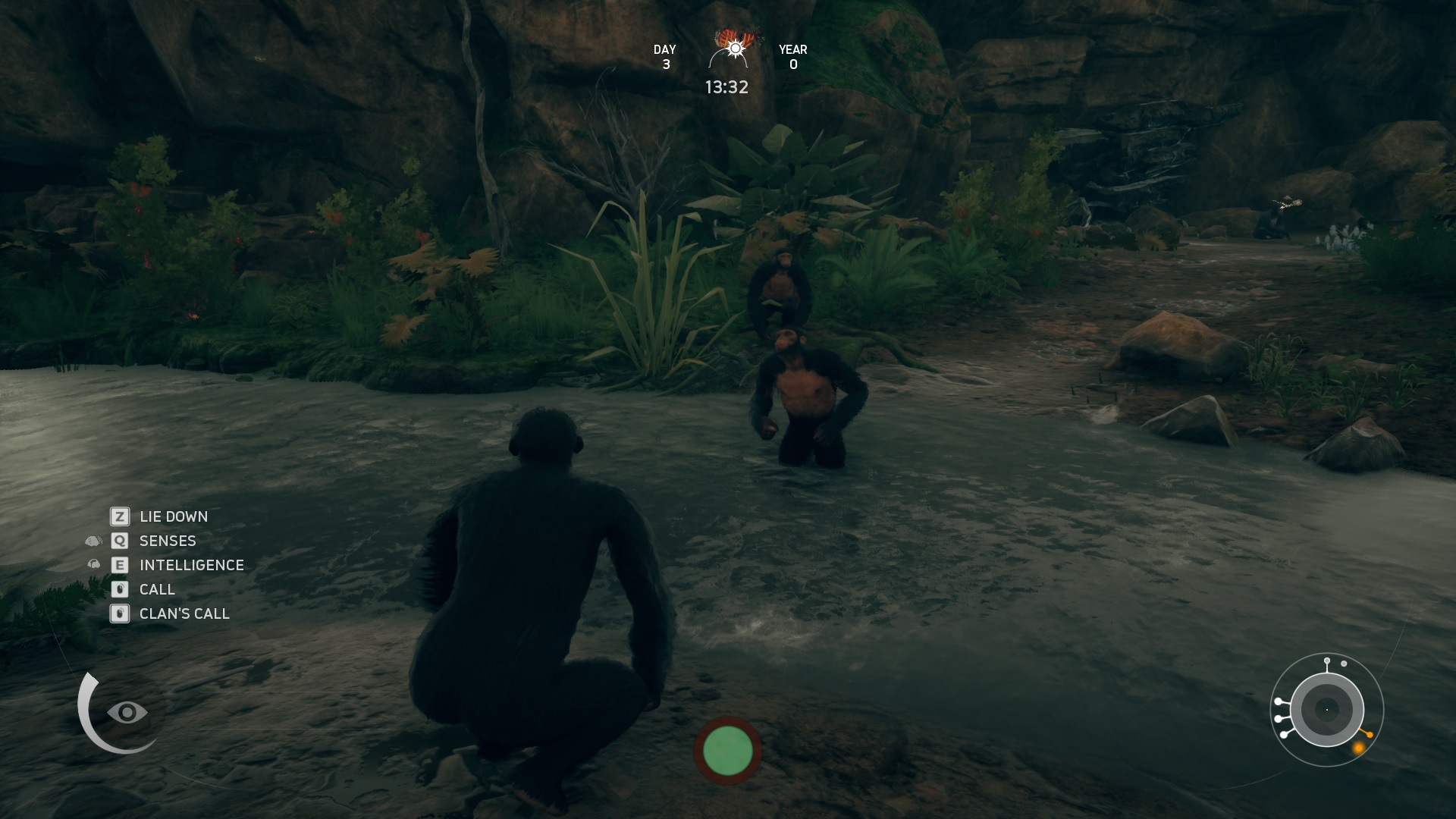
Now, check out the gameplay image above. That is TOO MANY buttons. But that part doesn't actually surprise me. The movement controls of the original Assassin's Creed games are, like... weird. You had to hold down two or three buttons in order to run across roofs and parkour off walls. There was a bit of skill to getting used to some weird controls. But Ancestors doesn't really bring that together; there's just too many buttons to remember.
Even if you can remember all those buttons, the gameplay loop is essentially to investigate every single thing in the world. There's not really any choices to make, either; this isn't like Spore, where you can evolve in different directions. You're always going towards being more human; the only question is how good or bad you are at it.
So: awkward controls, pretentious story, boring game design, shoddy graphics. Nothing about this game works. It is a fascinating failed experiment that somebody put way too much money into.
13) Total Tank Simulator

That's a hell of a claim to make in your title. "This game has EVERYTHING you could POSSIBLY want to have out of a tank simulator." Okay, I'll bite, TTS, whatcha got?
So here's what we get.
1) A tactical game that basically amounts to "place all the tanks you can afford onto the battle and hope you don't get steamrolled".
2) The ability to step into one of those tanks and play in first person, trusting that the larger tactical game around you isn't going to blow up in the meantime.
3) That... seems to be about it.
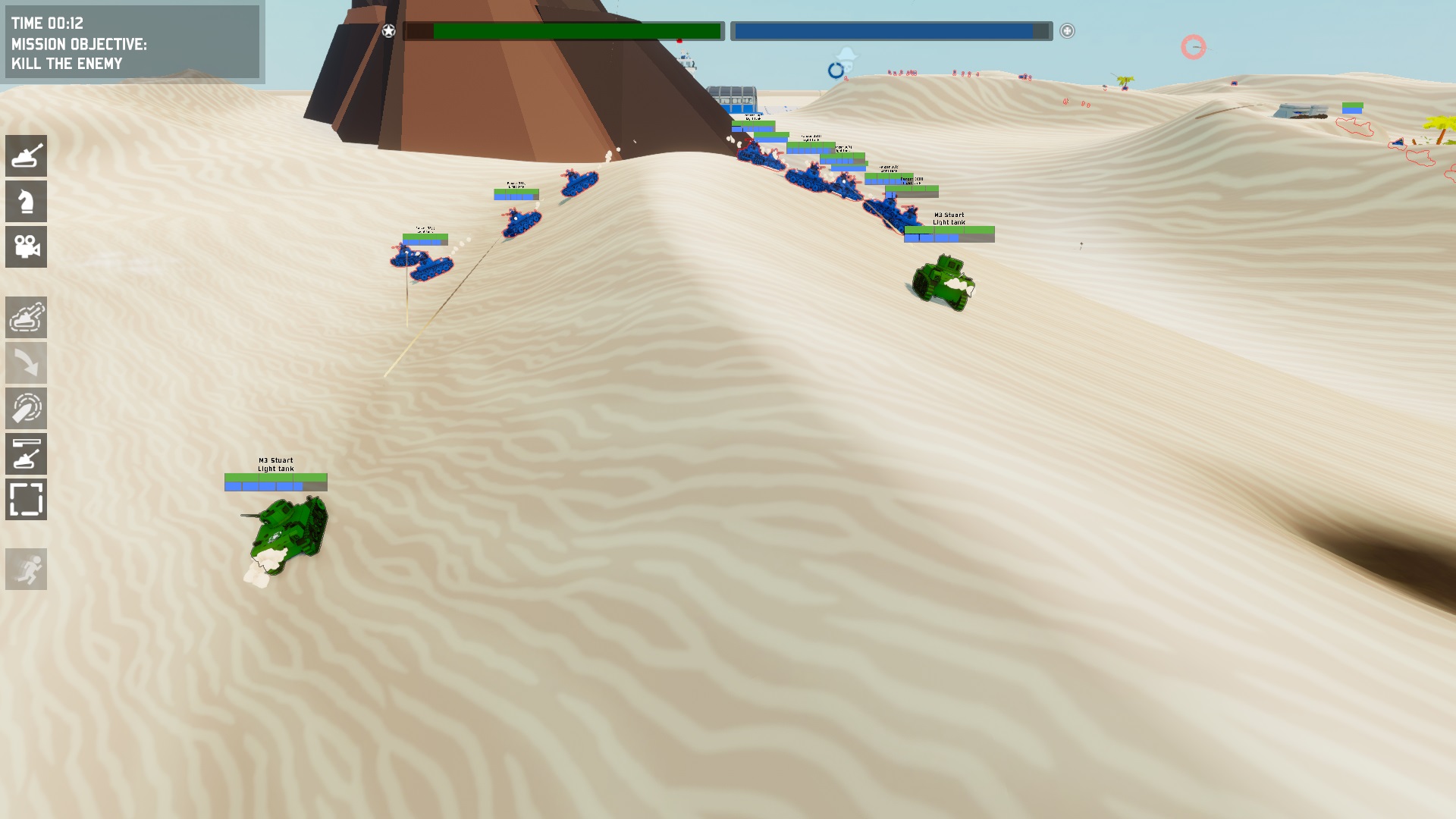
I have so many questions. Why does this game take so long to load? Why are the tutorials so broken? Why is the campaign so boring? Why would ANYBODY want this game to exist?
It doesn't even seem to have enough detail that a tank enthusiast would enjoy it? All the graphics are super simple, and the tank types all seem really generic. Who is this for?
Certainly not me. This game is simultaneously completely obtuse and way too simple to be enjoyable, and I got out of there as fast as I could.
HUMBLE JANUARY 2016 BUNDLE
1) The Talos Principle
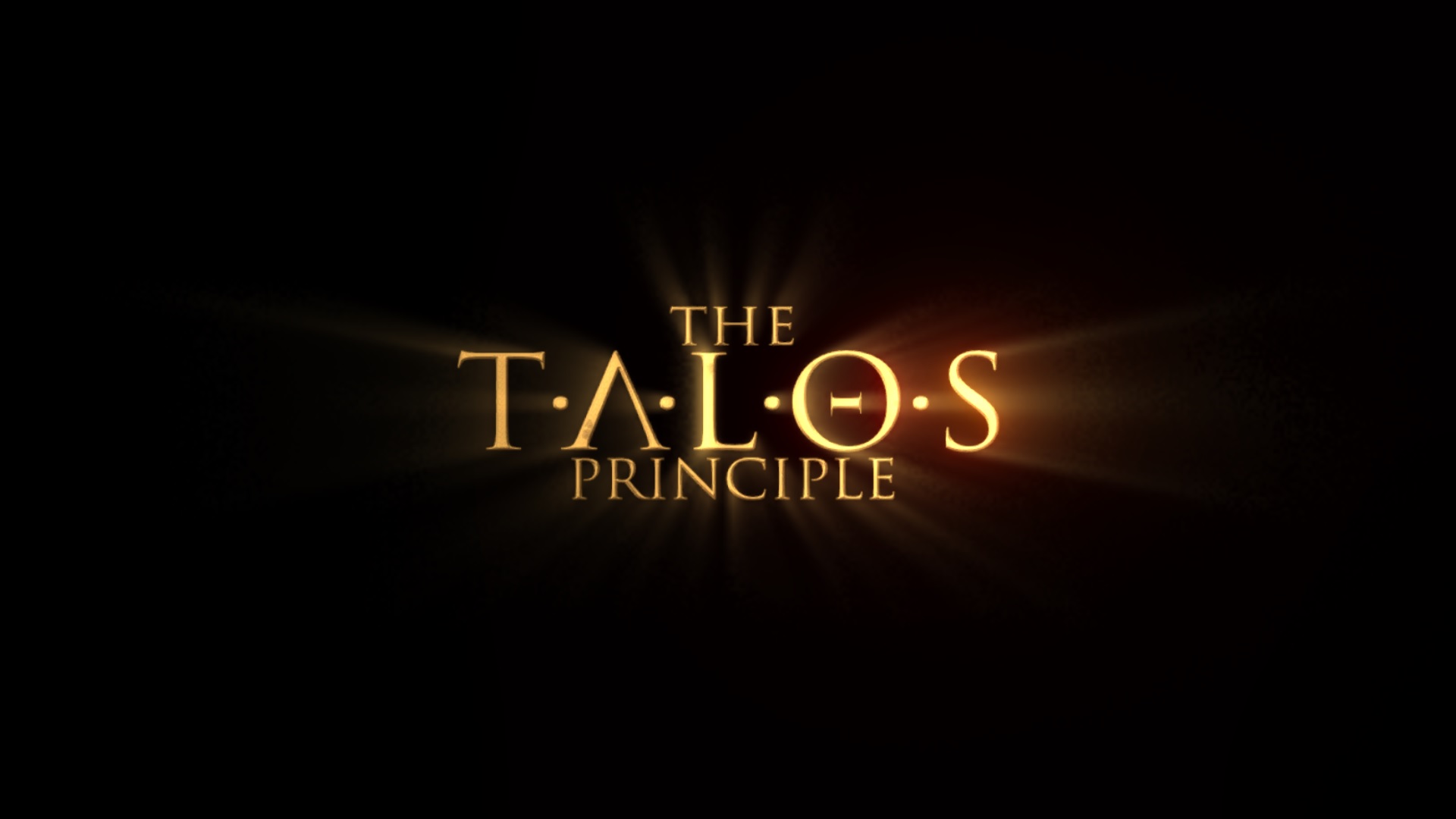
The Talos Principle is one of my favorite games of all time. No, really.
I've actually tried doing this project before, playing all the games I've received in the Humble Monthly Bundles. Without the deadlines imposed by this blog, it's been hard to actually finish the project before. But I have played thru The Talos Principle multiple times. And I love it.
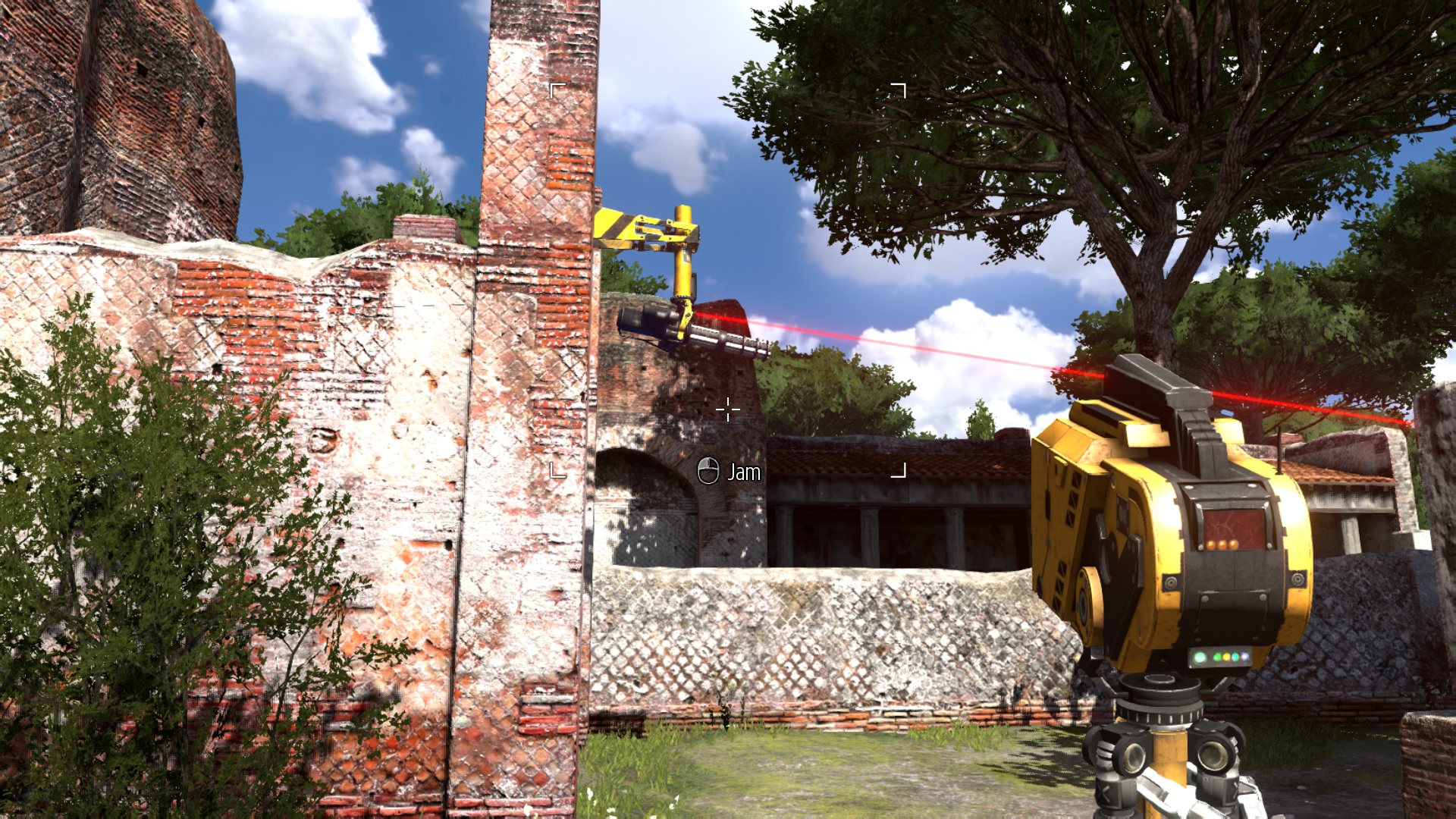
The Talos Principle is a first person puzzle game. A bit like Myst, a bit like Portal, but with no puzzle concepts that are all that original. The Talos Principle is about moving boxes, reflecting lasers, and making copies of yourself to solve puzzles. It's very very basic.
But it's also meditative as hell. You have conversations with an AI. You explore ruins of old civilizations - Greek, Egyptian, and Medieval Europe. You find fragments of philosophical text and scientific journals.
In the margins of the puzzles, you're questioning the nature of your own existence and surroundings - both within the game and without it. But the majority of the game *is* the puzzles. It's like the game gives you some big things to think about, and then has you do some puzzles to occupy another part of your brain while you think about those things.
In construction, Talos Principle seems basic on the surface. But it is such a transcendentally good experience, I can't say enough good things about it.
2) Mushroom 11
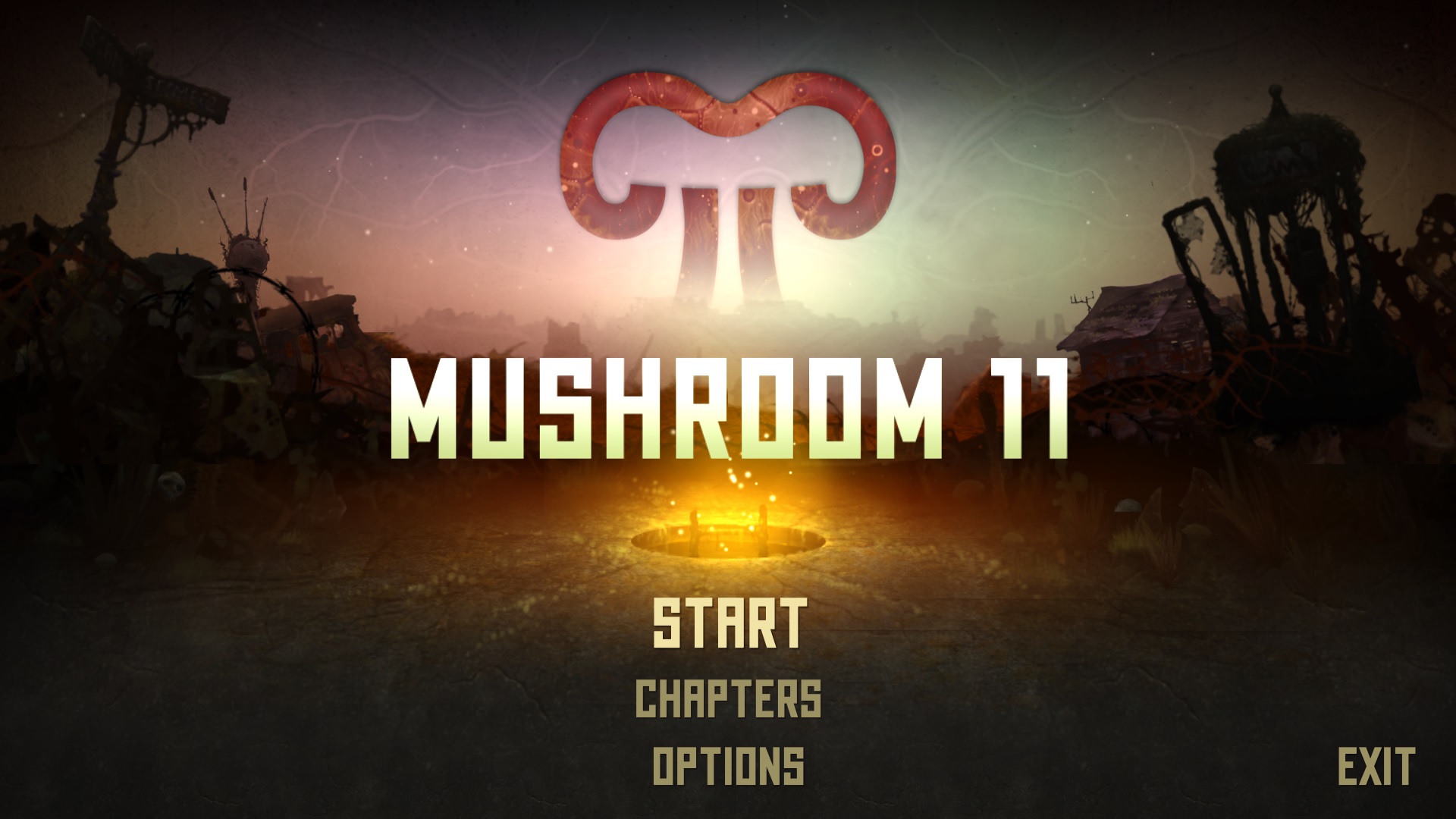
Mushroom 11 might be the only game I know where you play as an eraser. Well, sort of. You play as a slime mold, but you have no way of actually controlling it. Your method of interaction with the game is a large circle that allows you to erase parts of the slime mold that interact with it. The catch is, once you erase part of the mold, it will regenerate somewhere else on the mold, randomly. This is effectively how you move around: erase part of the mold, thus forcing the mold to regrow in the direction you want it to go.
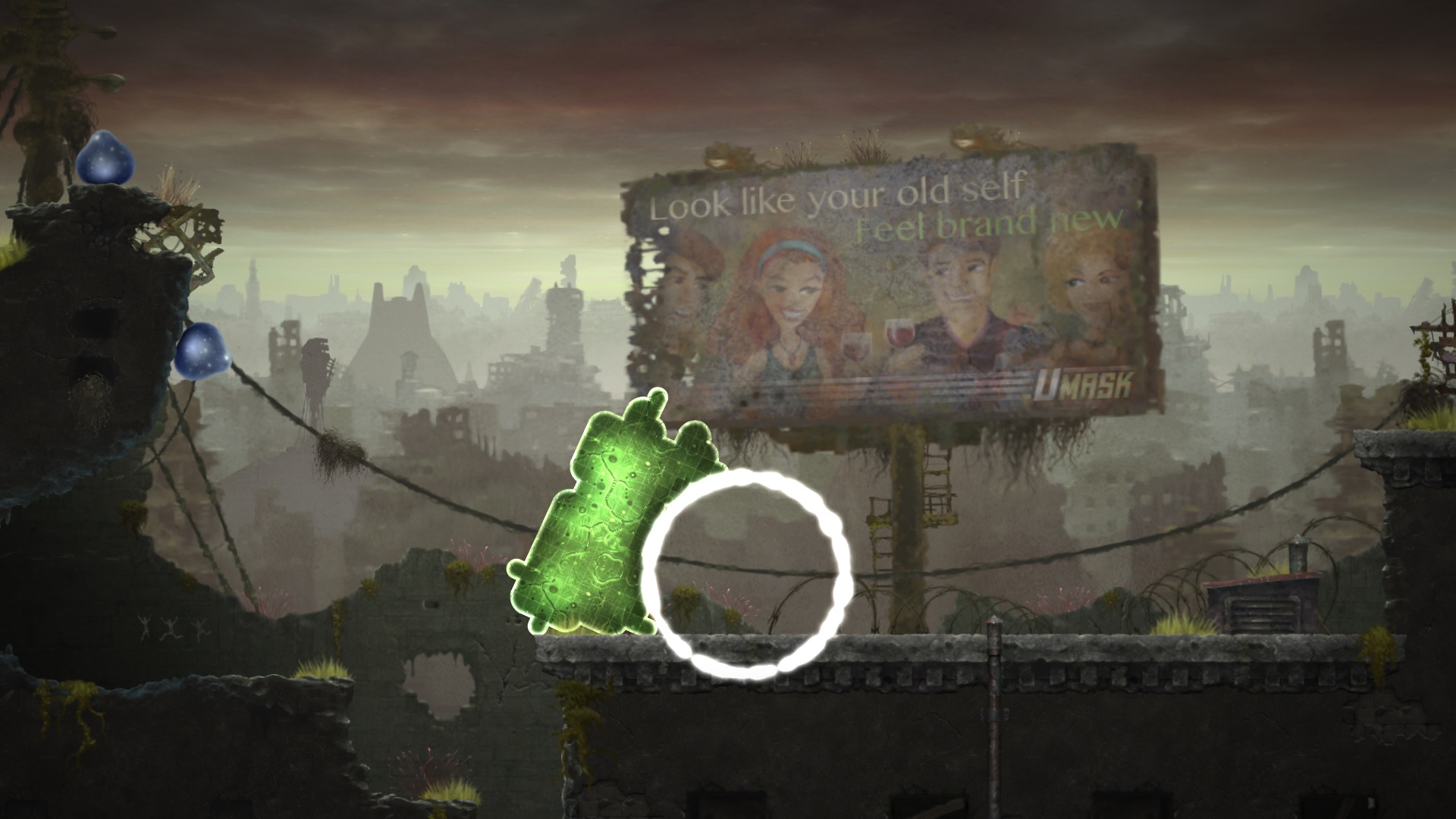
Surely, somebody came up with this method of gameplay first, and then figured out what to do with it second. But hey, this is an actually pretty solid puzzle platformer, along the lines of Limbo. Things escalate slowly over time, but it doesn't last too long, either. Solid entry to the Humble bundle.
3) Grim Fandango Remastered
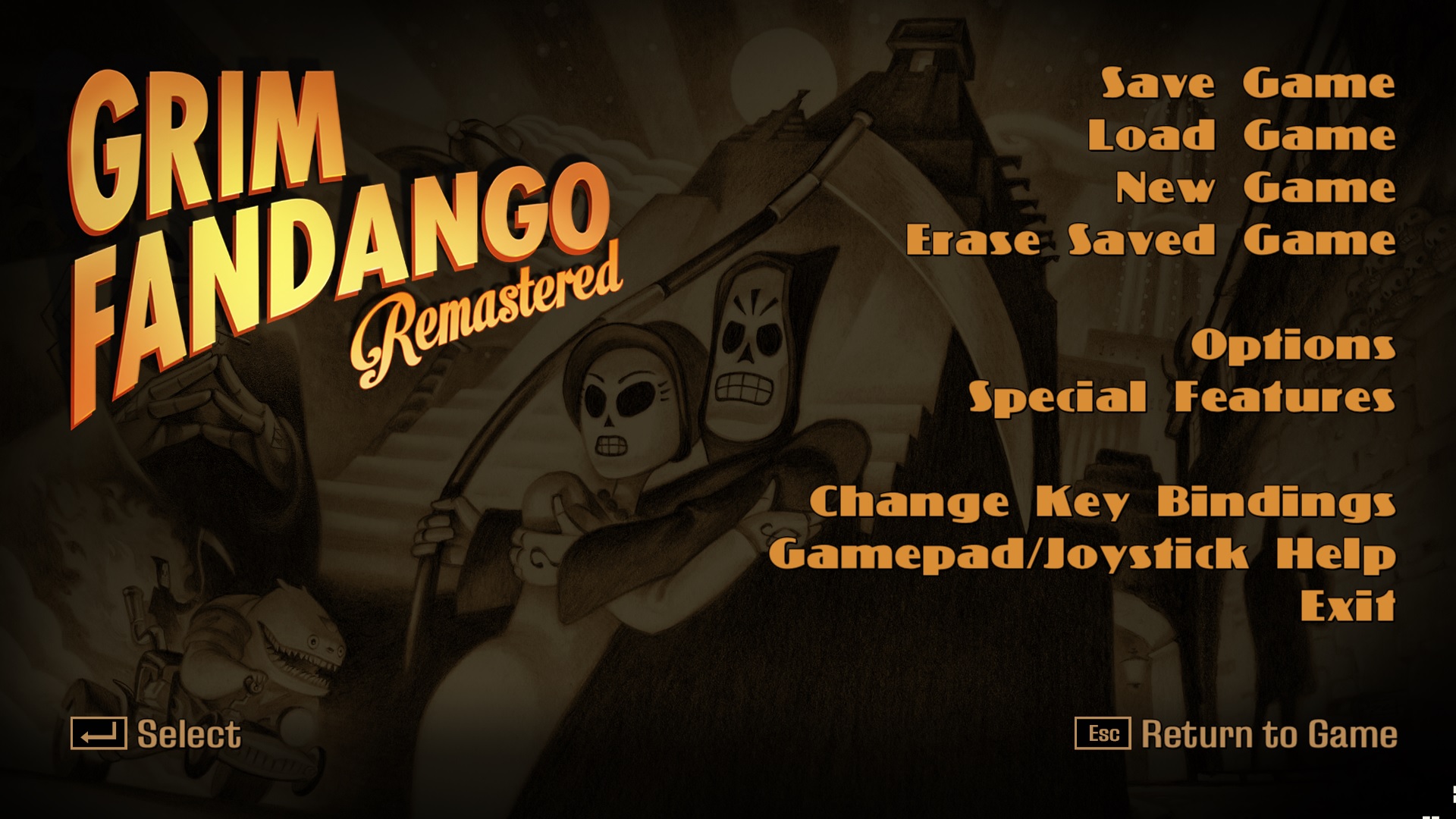
Play Grim Fandango with a walkthrough on hand. I'm a big proponent generally of spoiling yourself in media (games, movies, TV, etc) if it might give you a better experience.
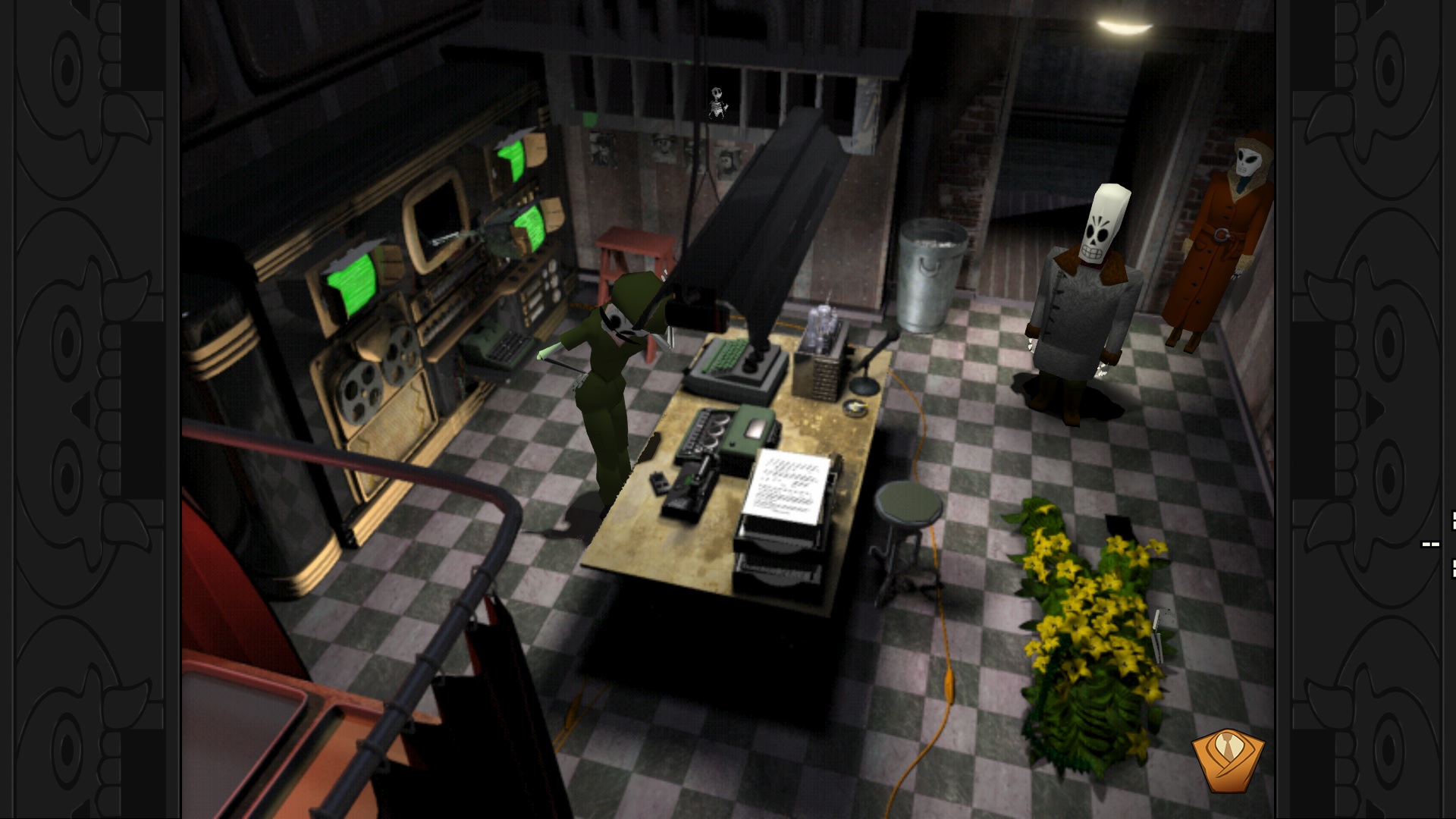
And Grim Fandango is a story worth playing. It has a unique world and set of characters, some solid voice acting and sound design, gorgeous art. But, yeah, it is also a late 90s adventure game, which means pixel-hunting puzzles. And those can spoil the experience if you get stuck on them for too long.
Don't let them discourage you. Grim Fandango is a flawed experience, but it's a sweet little tale.
4) Spelunky

I know this game is a classic. I know some people swear by Spelunky. Mark Brown brings it up nearly every episode in his Game Maker's Toolkit video essay series. But I just can't do it.
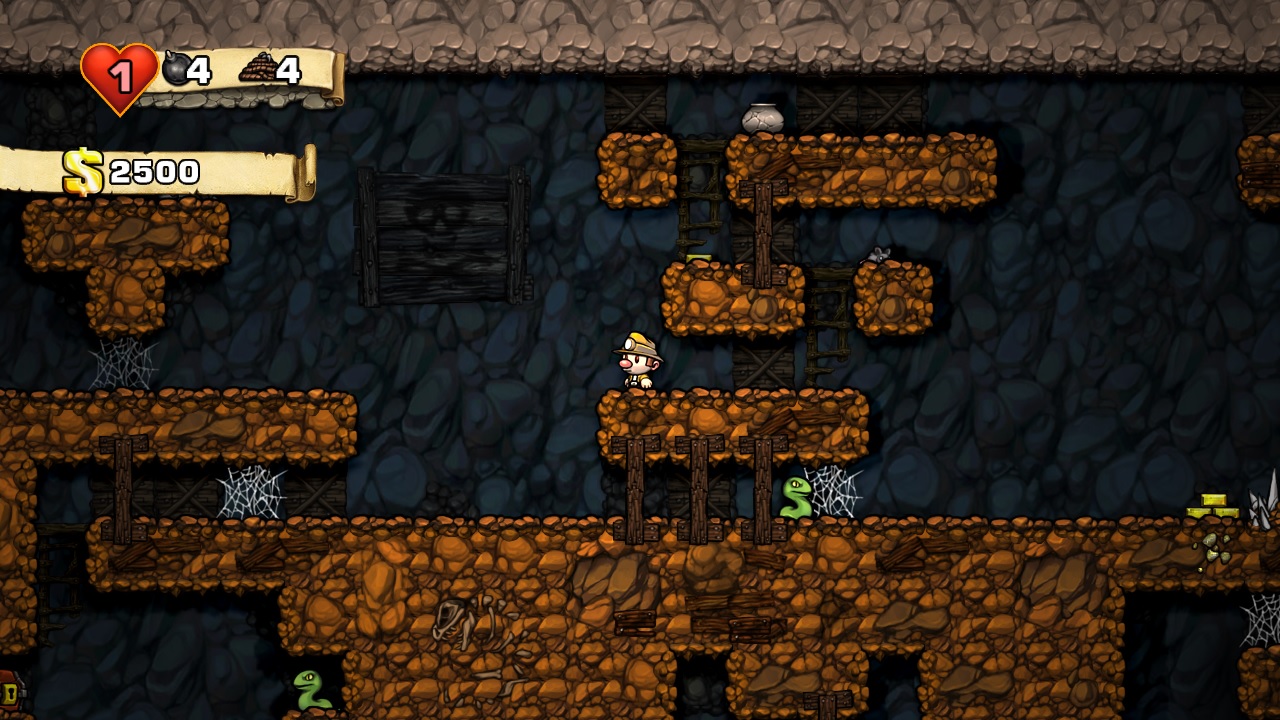
It's very pretty, and it's very polished. But an action platformer that randomly generates is punishingly difficult for me. I've only ever clicked with one roguelite before, Hades, and that game did give you some sort of progression most times you played it. With Spelunky, there's only so much you can learn about the game before your progress is determined by your skill in playing it.
It changed the face of indie gaming, and I'm glad that it's worked for some people. But it's not for me.
5) A Fistful of Gun
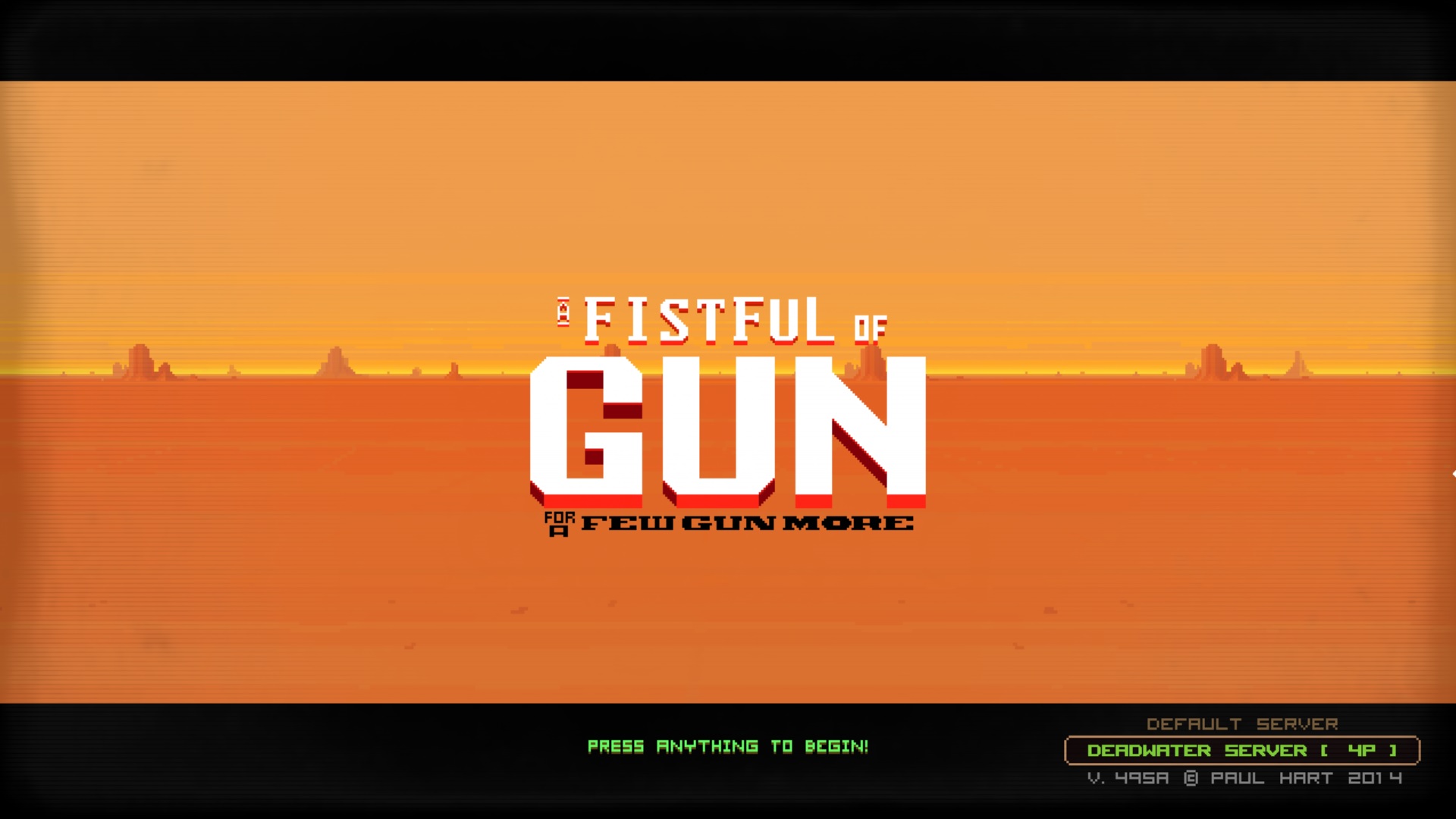
A Fistful of Gun is clearly intended to be sort of an arcade experience. It prominently displays its arcade option in the main menu, and when you die you get a slow countdown from 10 if you want to restart, like in an arcade. It's clearly meant to be a light shooter that doesn't take too much effort to play.
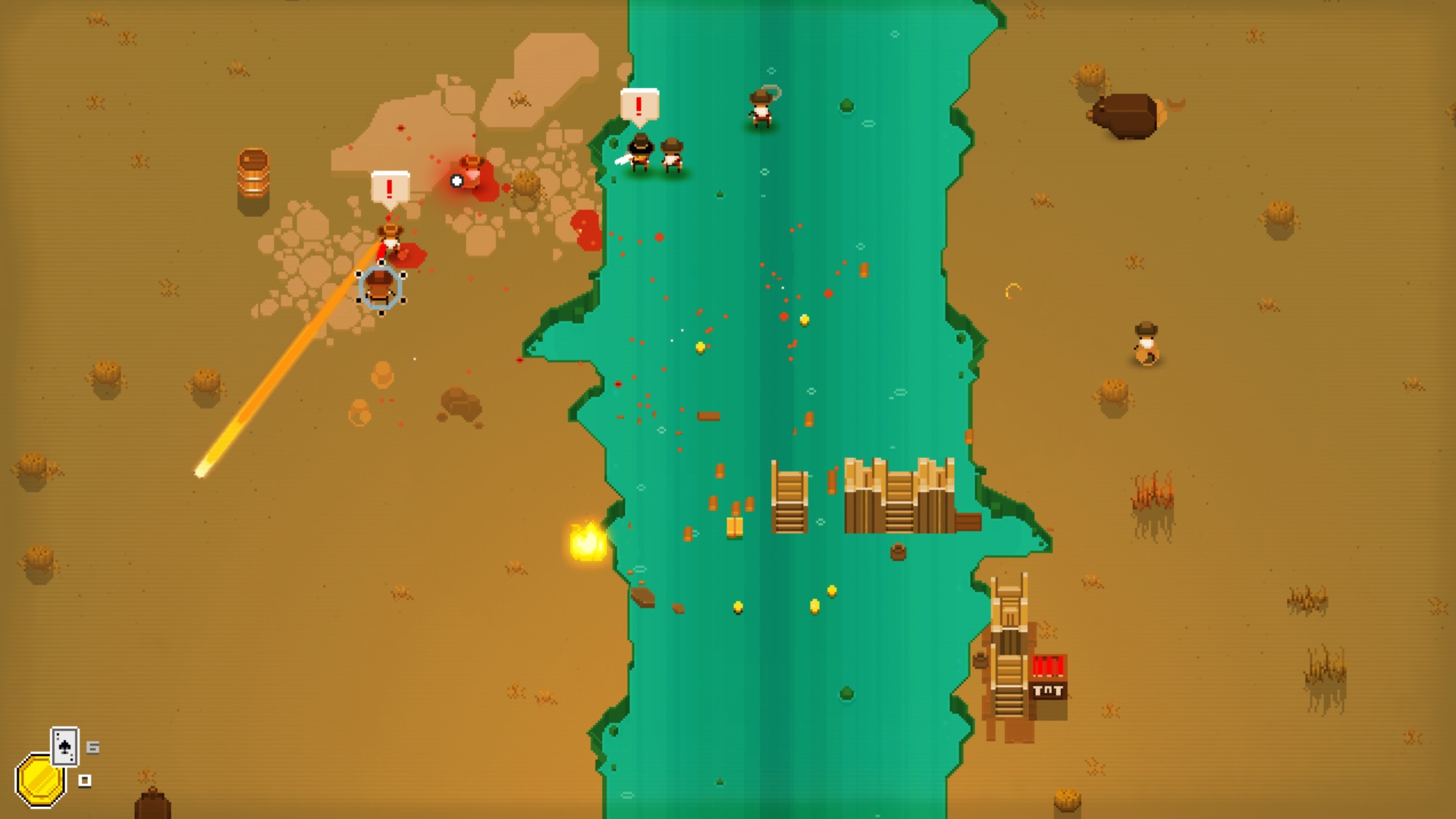
Shame it doesn't really work. The characters aren't very much fun to play; they're all pretty finnicky. In contrast, the enemies are very fast, and the game clearly wants you to keep up a fast pace.
There's a story, about finding an evil bad guy in the Wild West, but it's basically an excuse to play thru a bunch of random maps. For a game that wants to be so low effort, it's remarkably unfun to play.